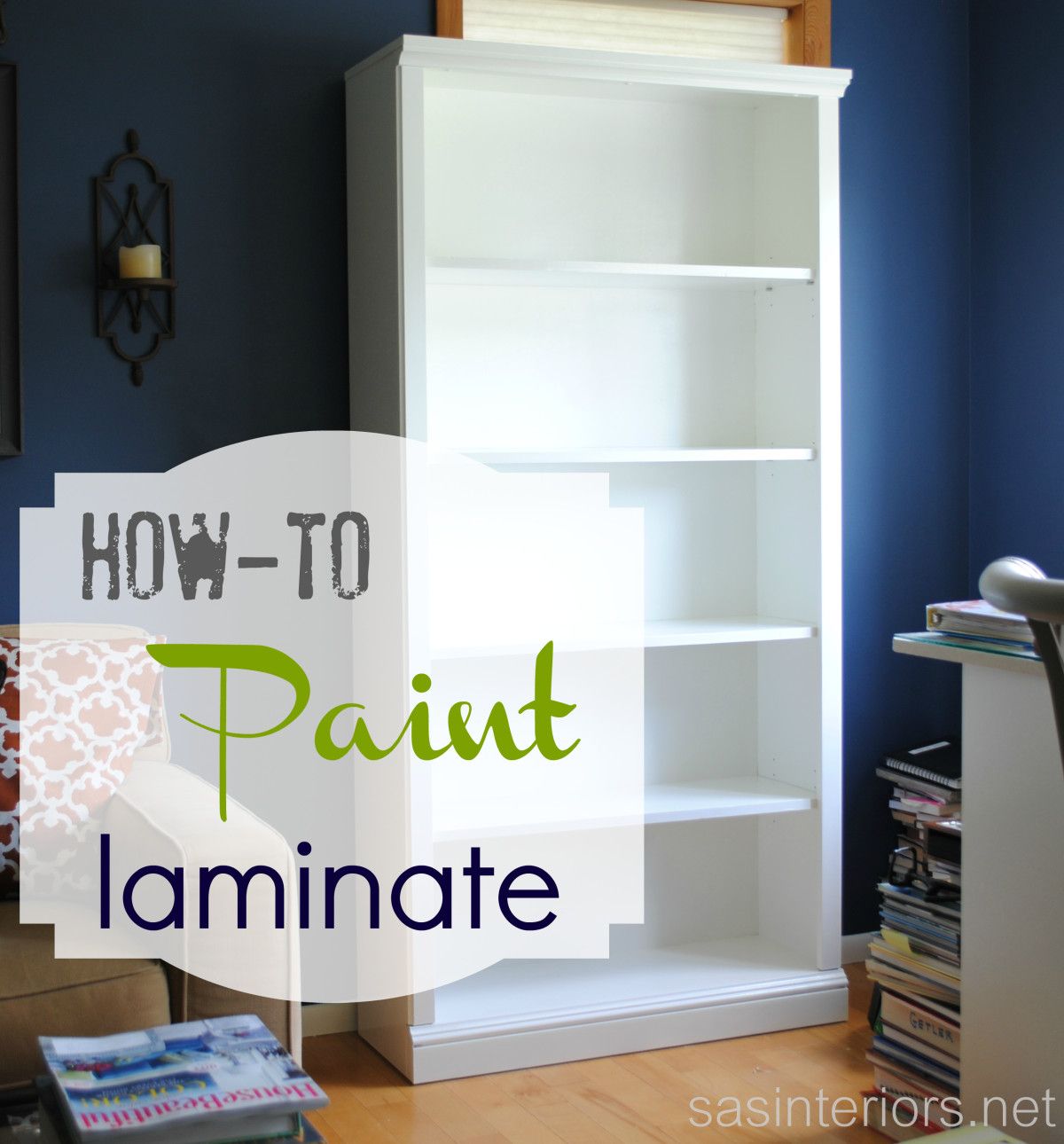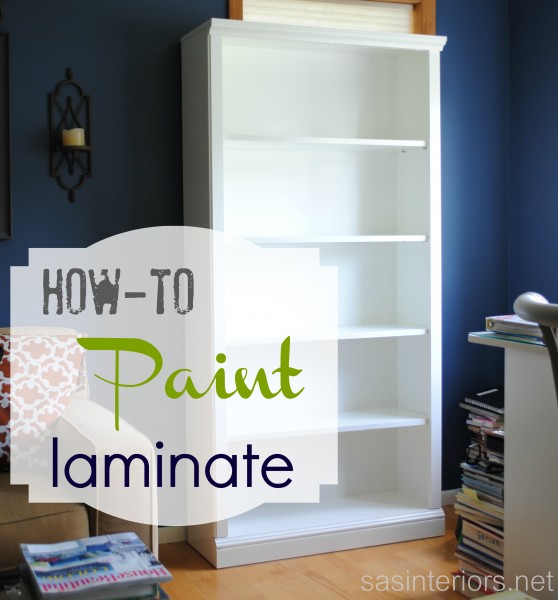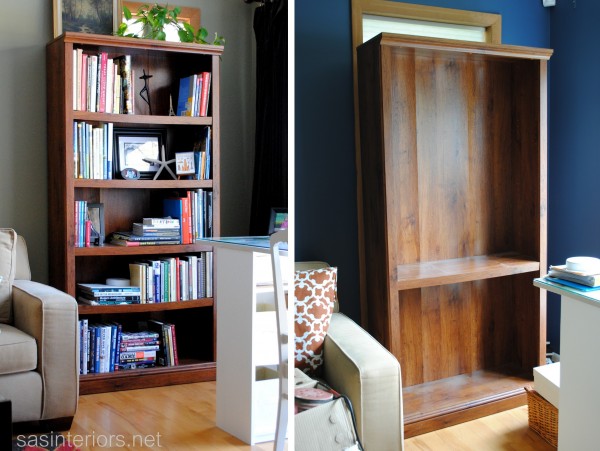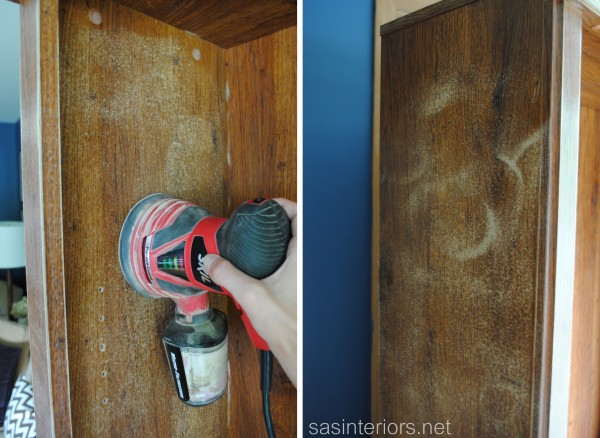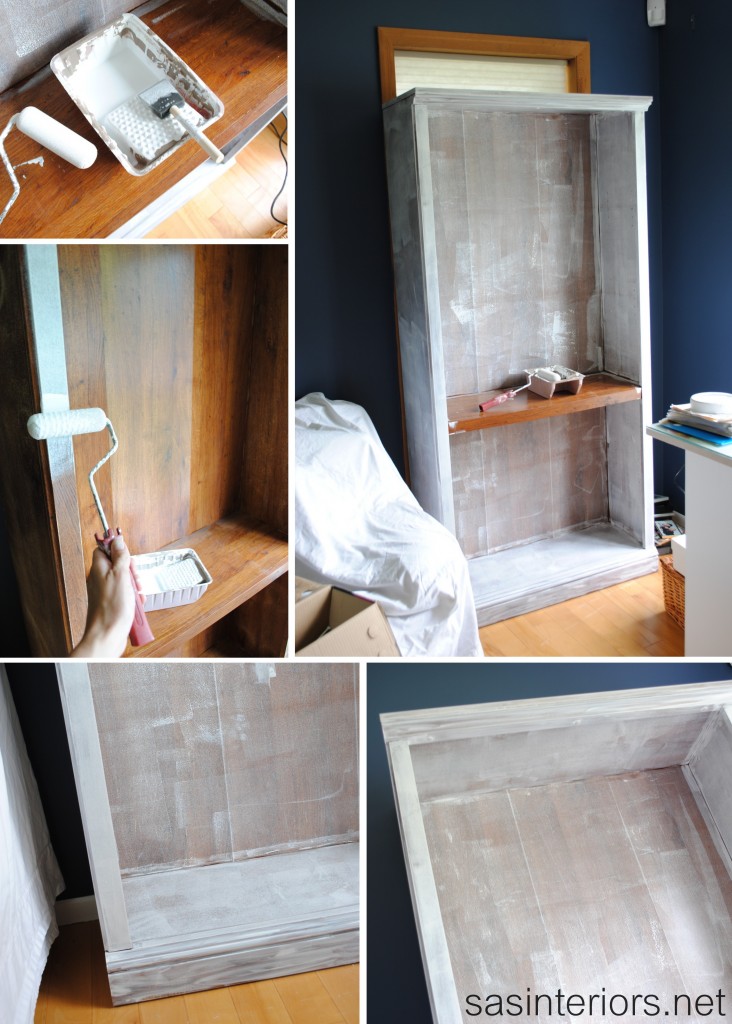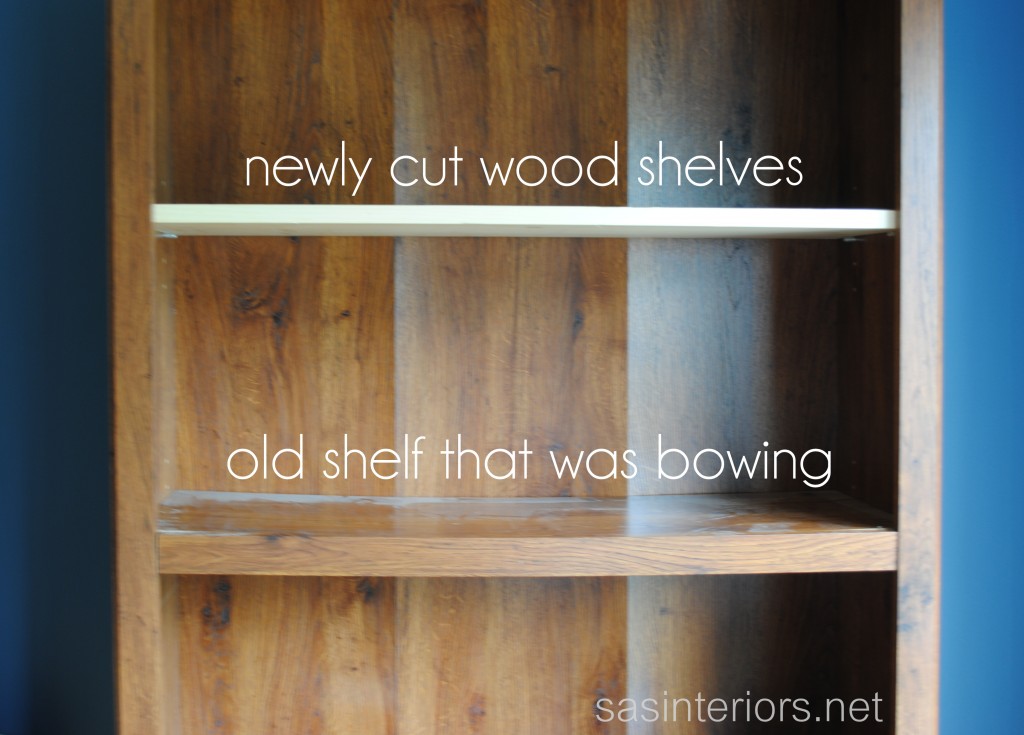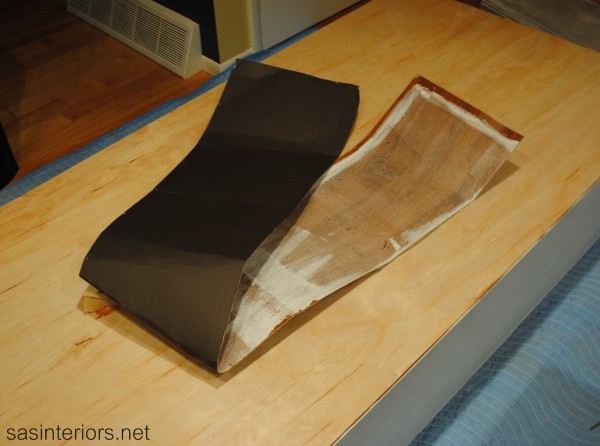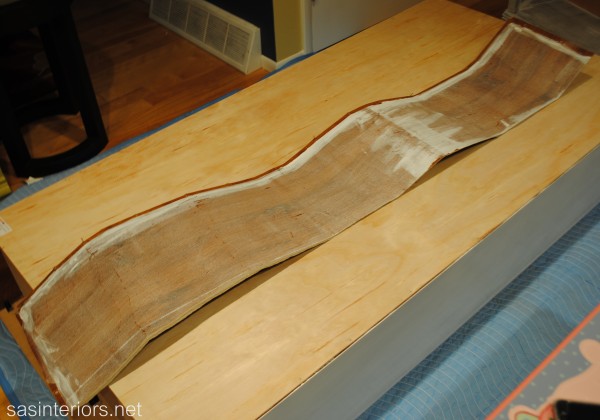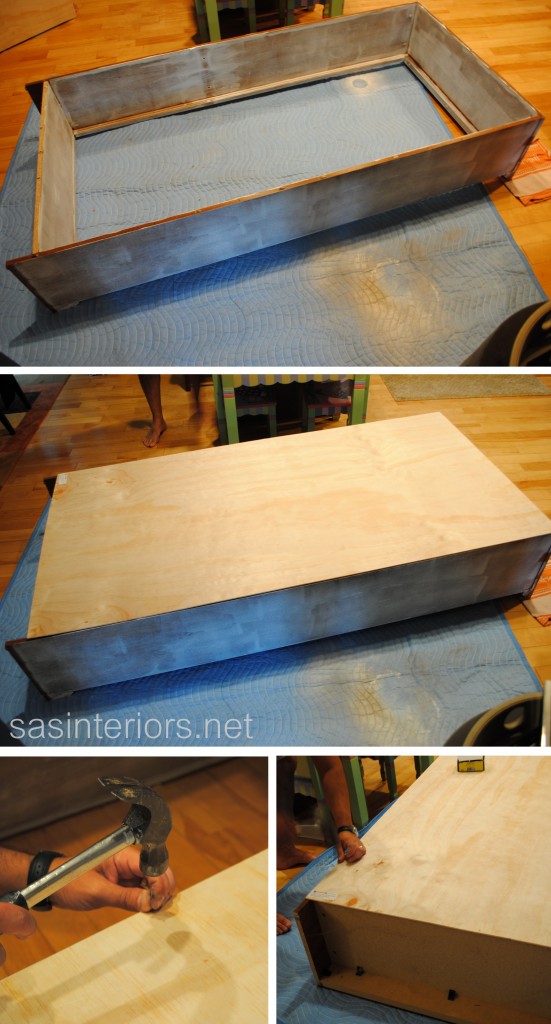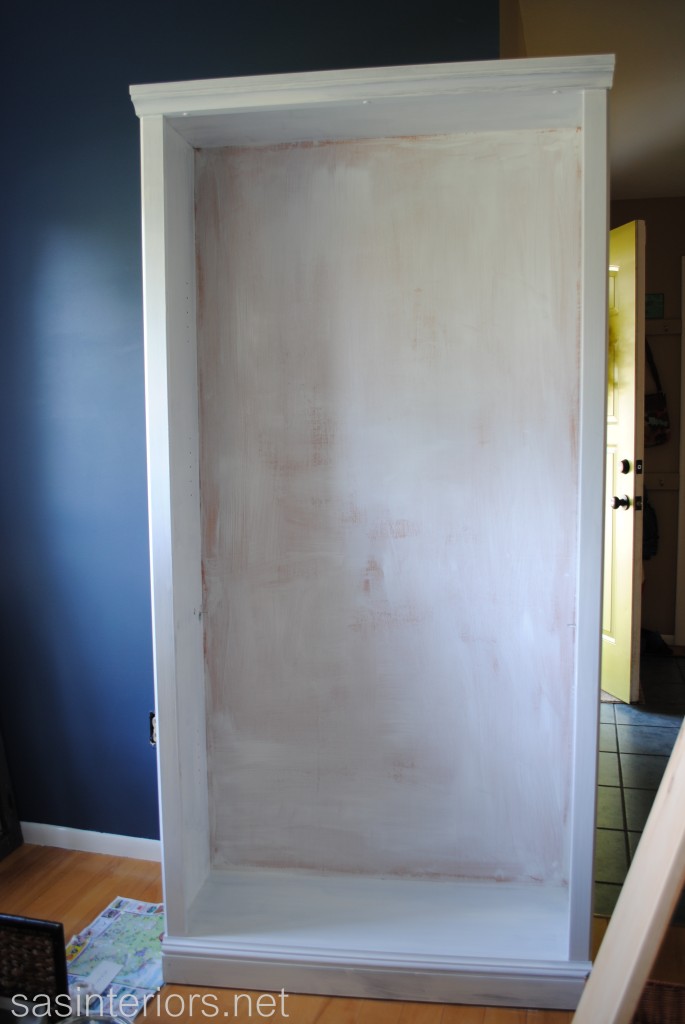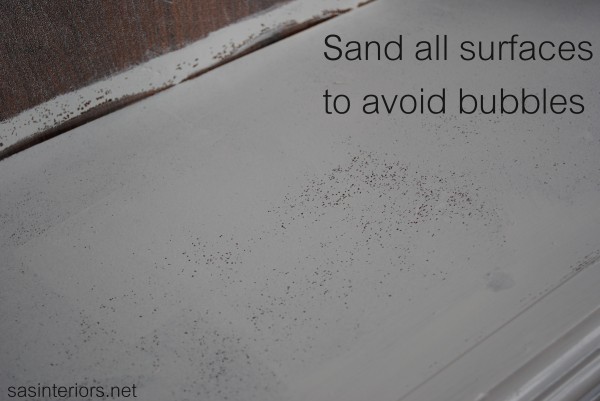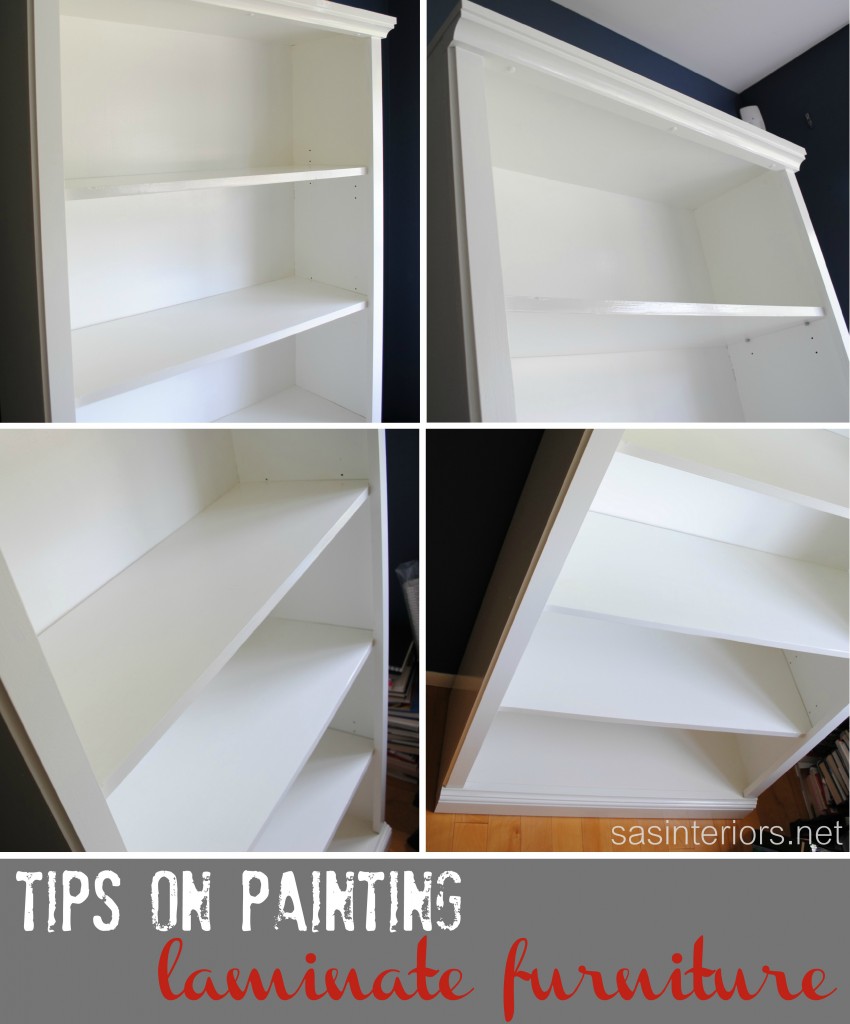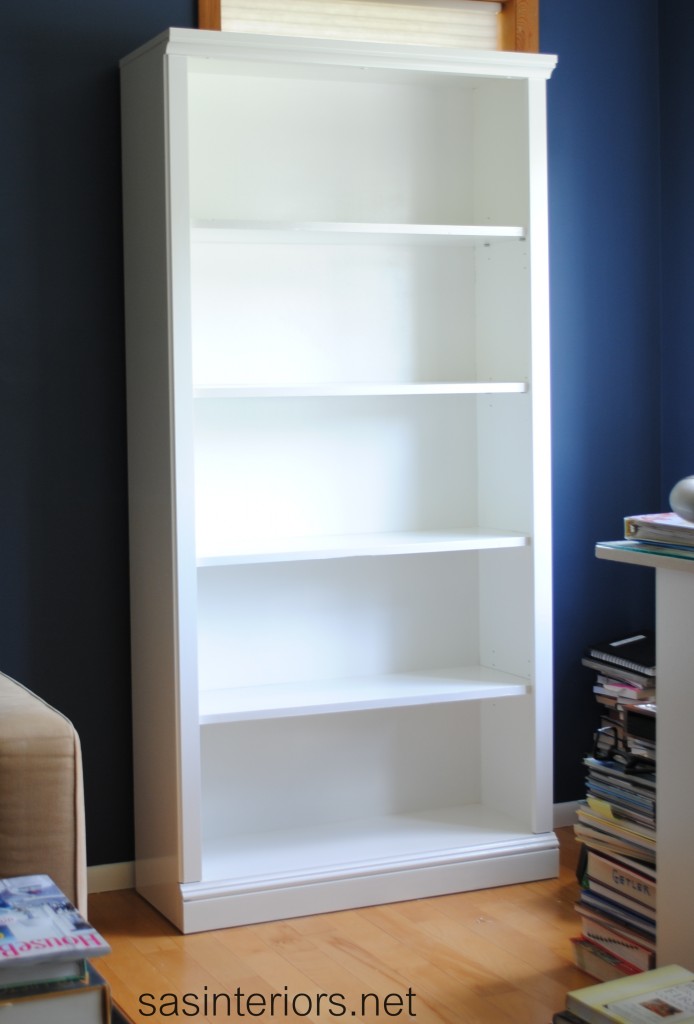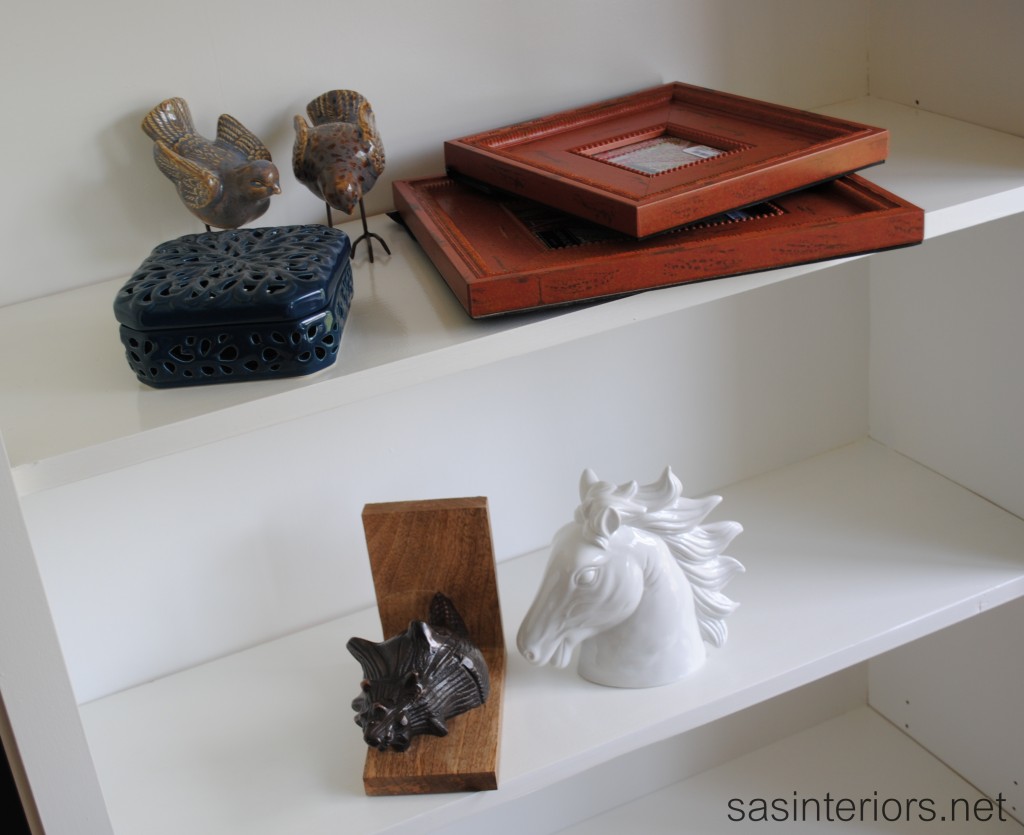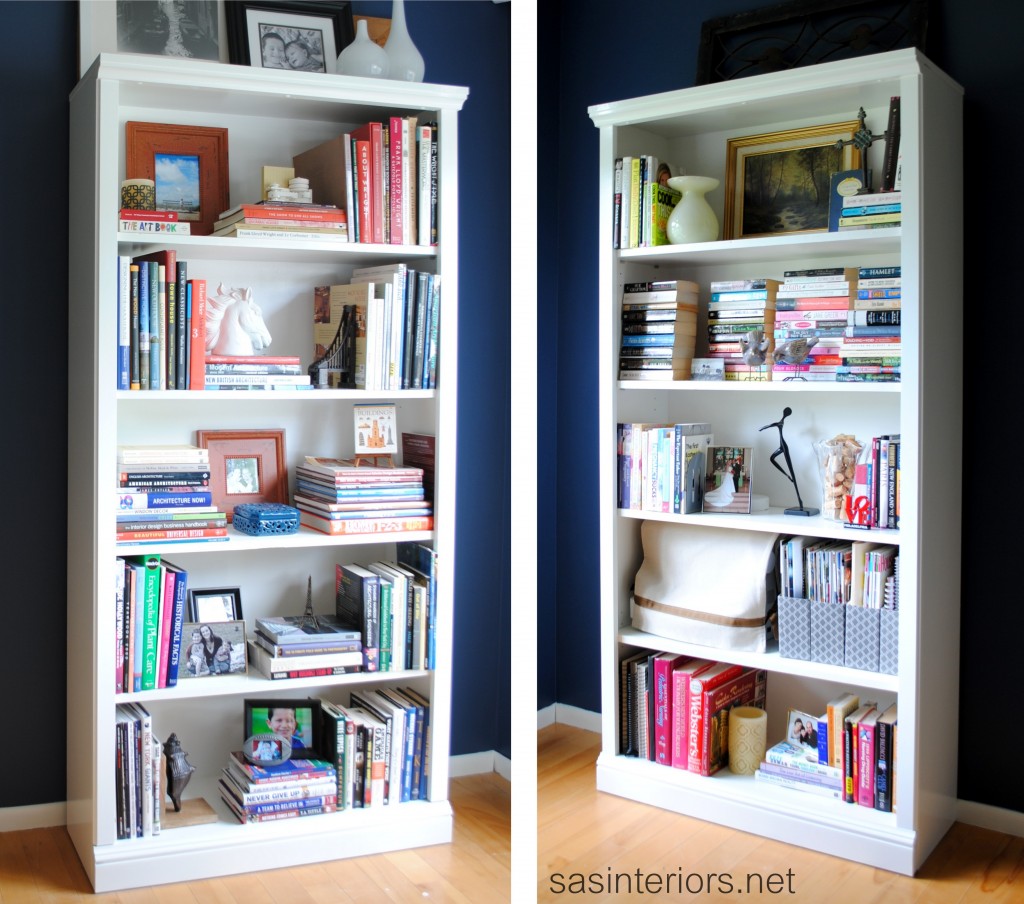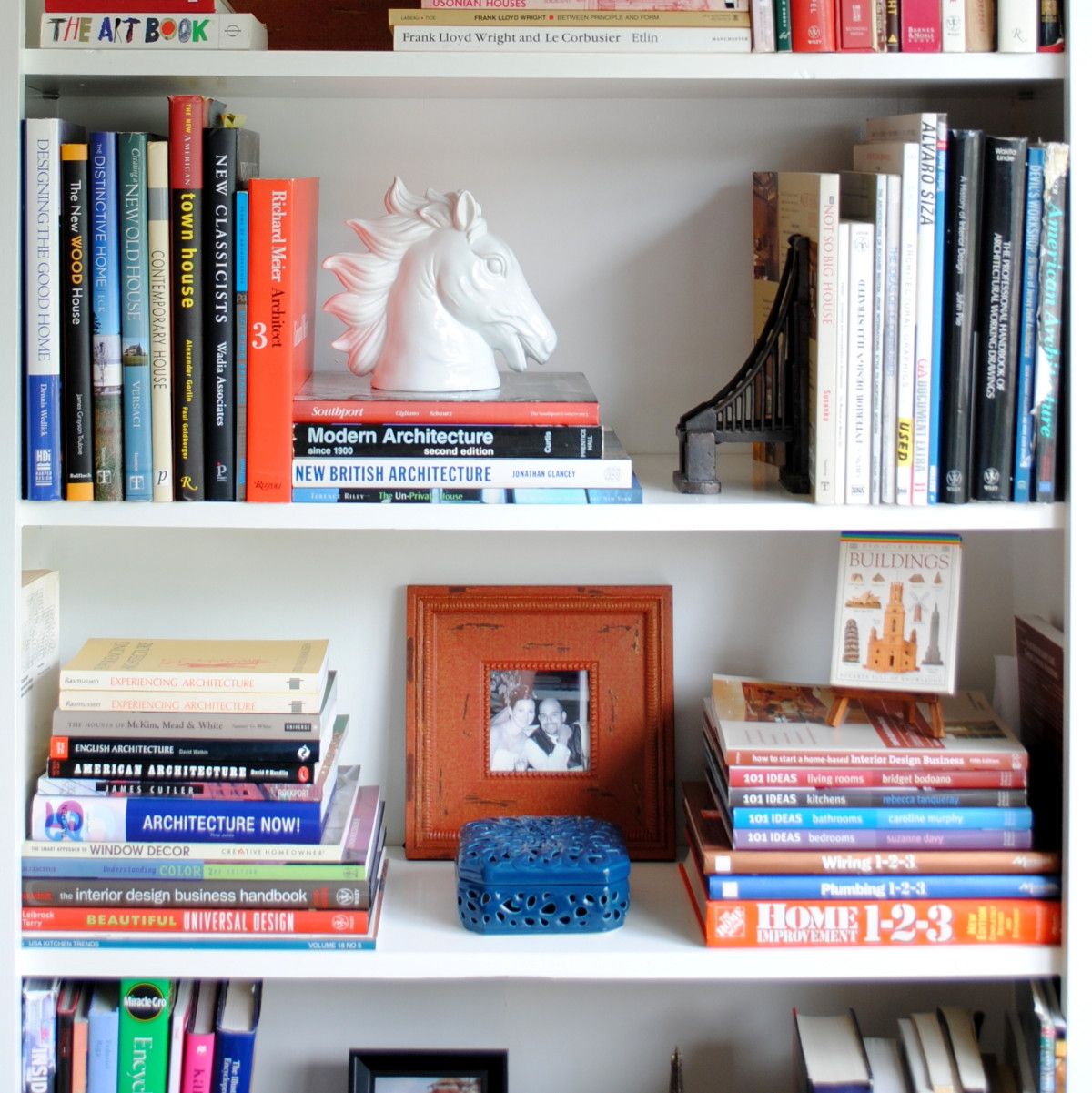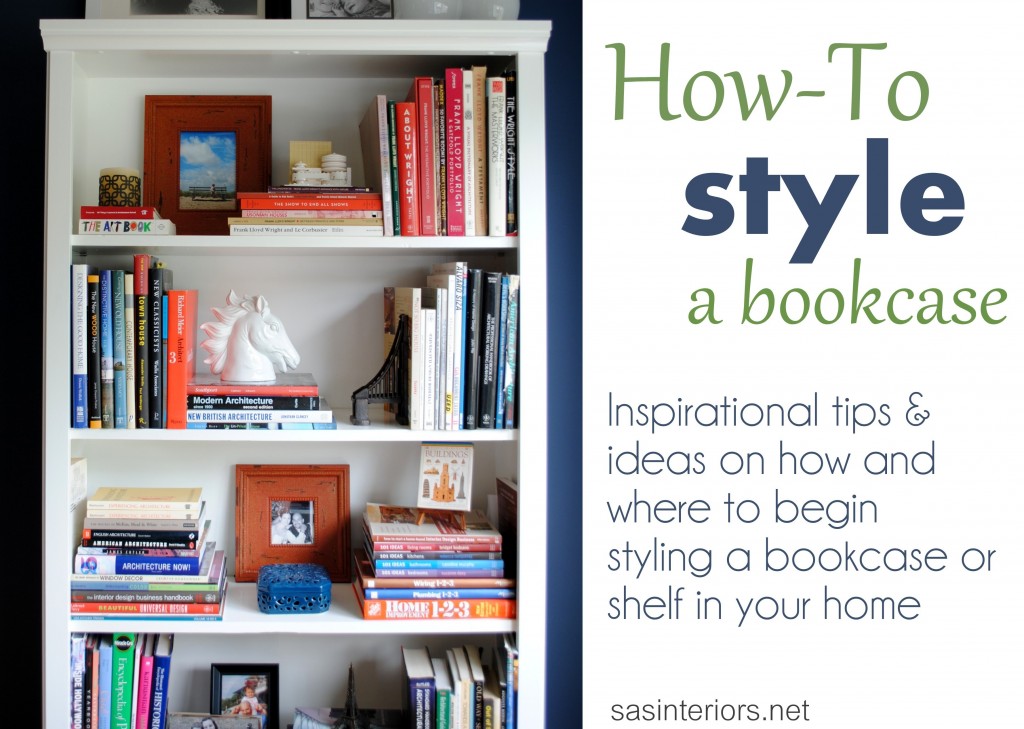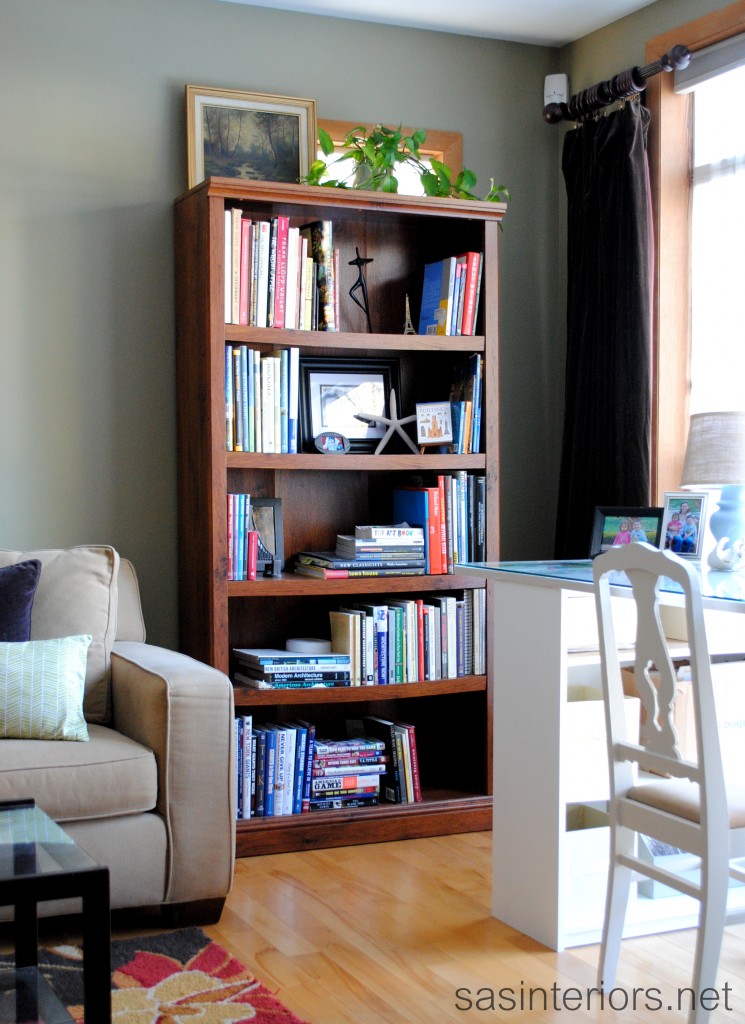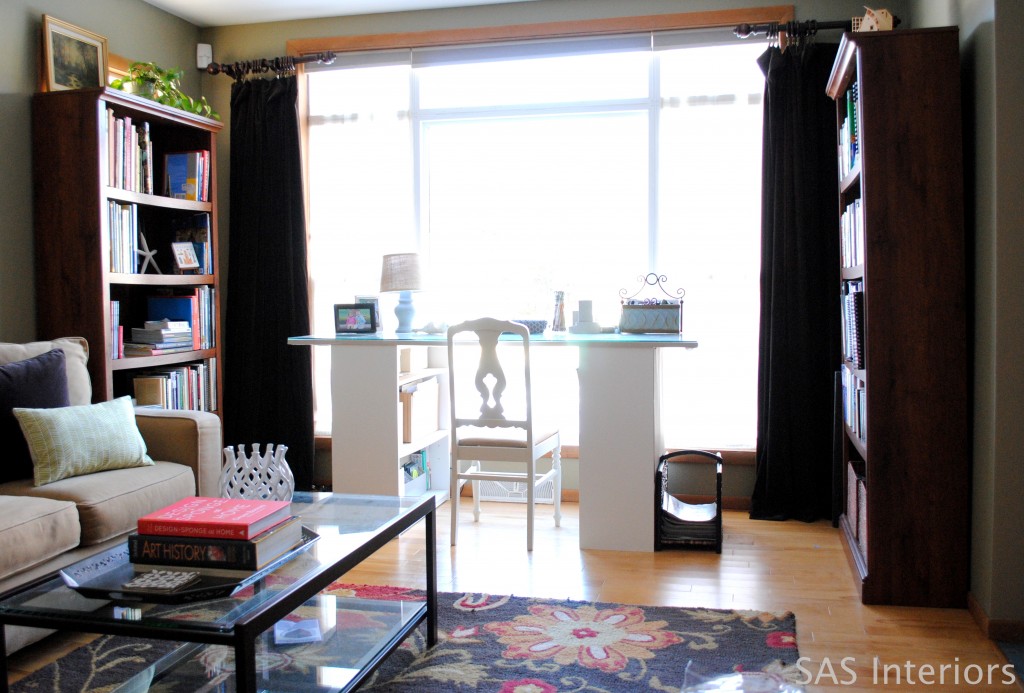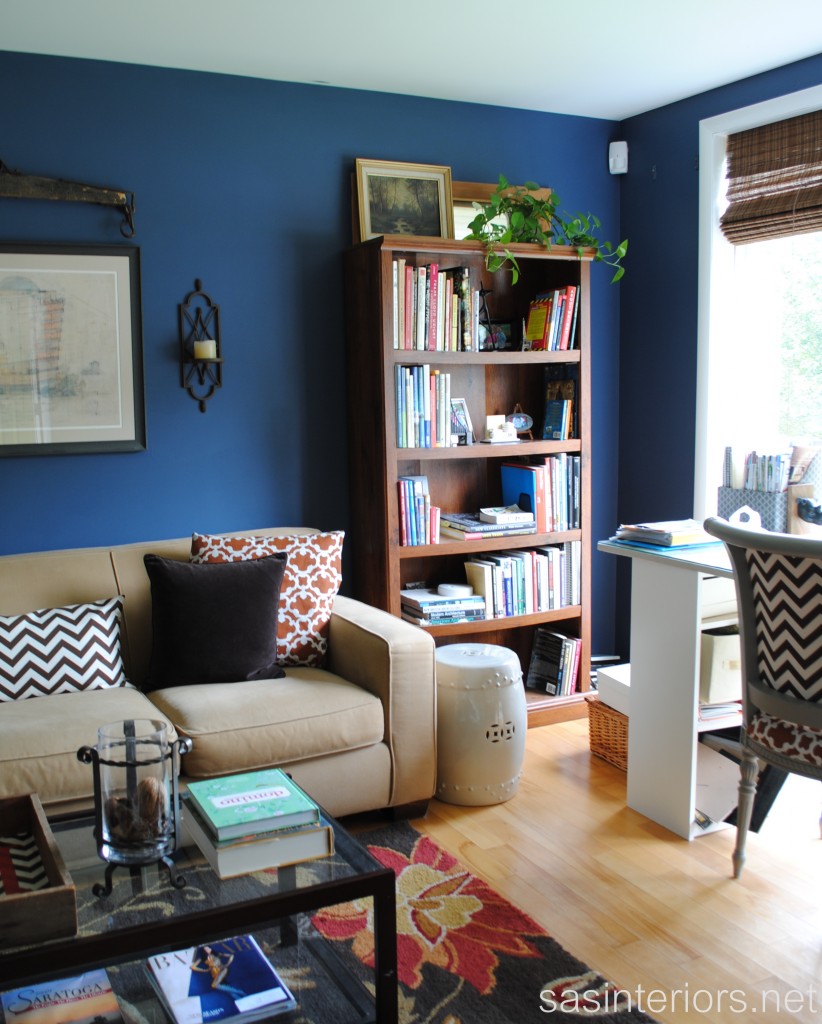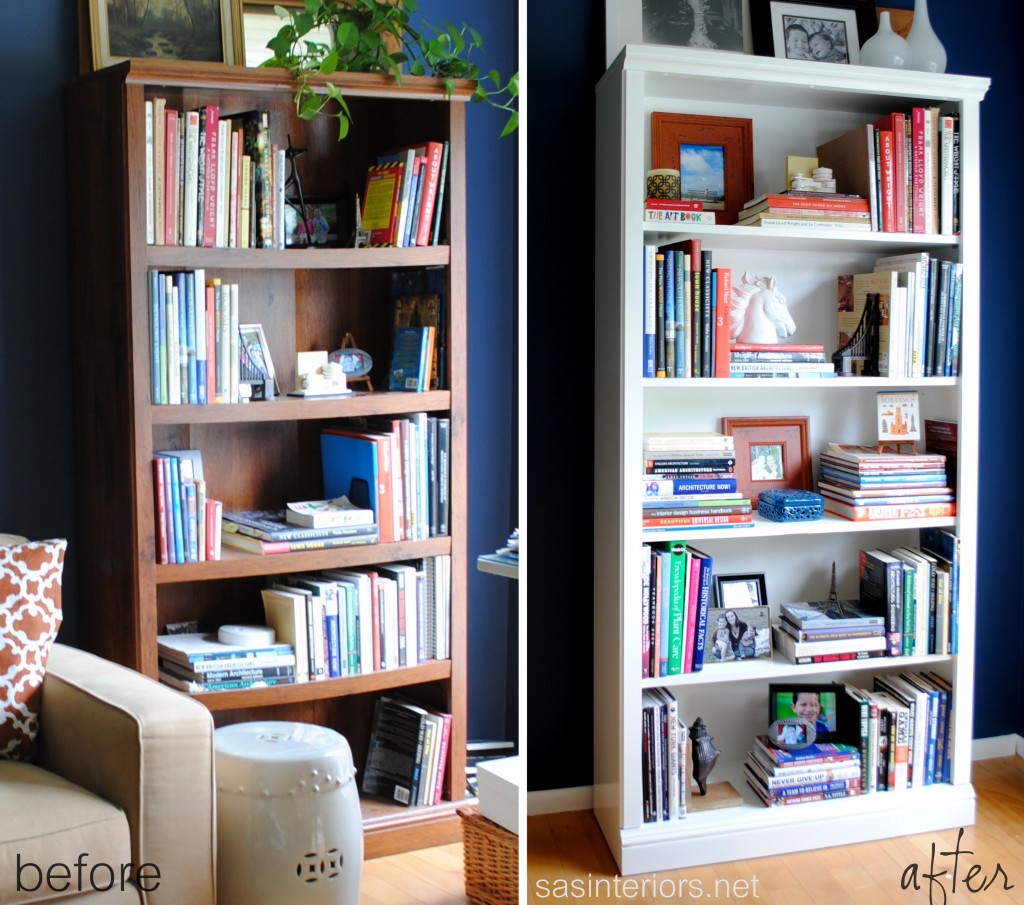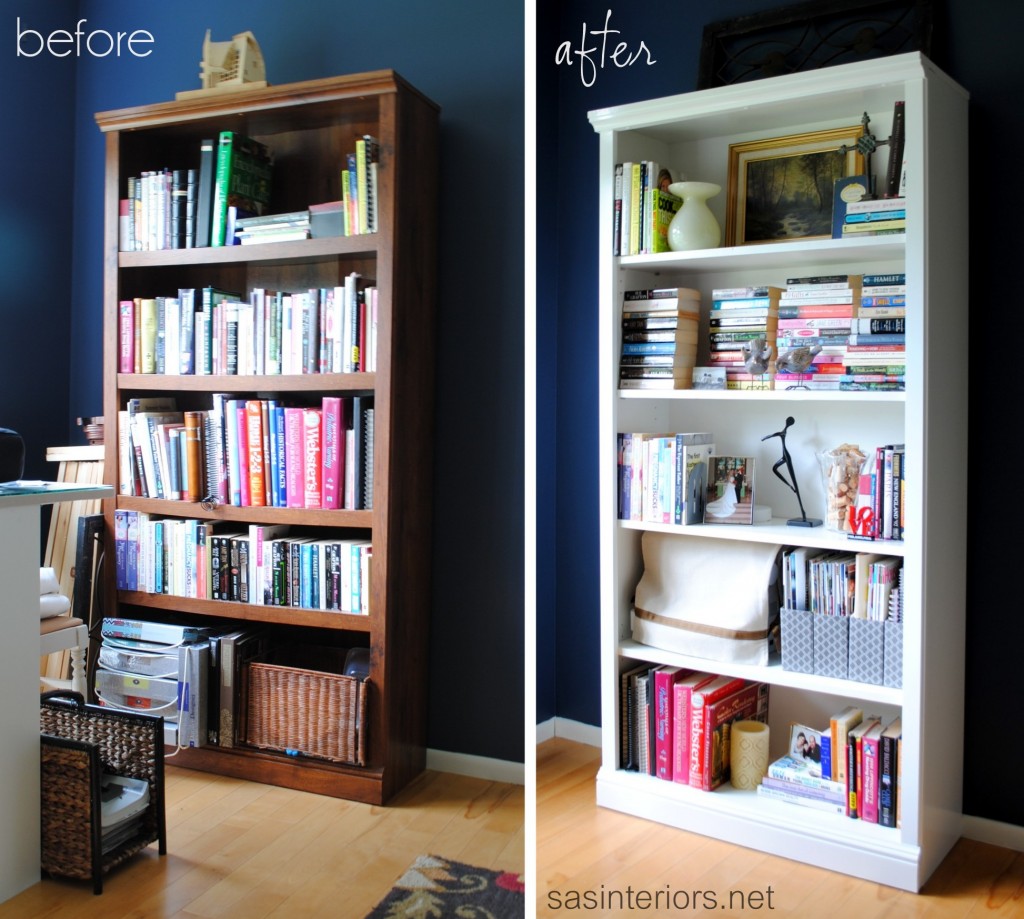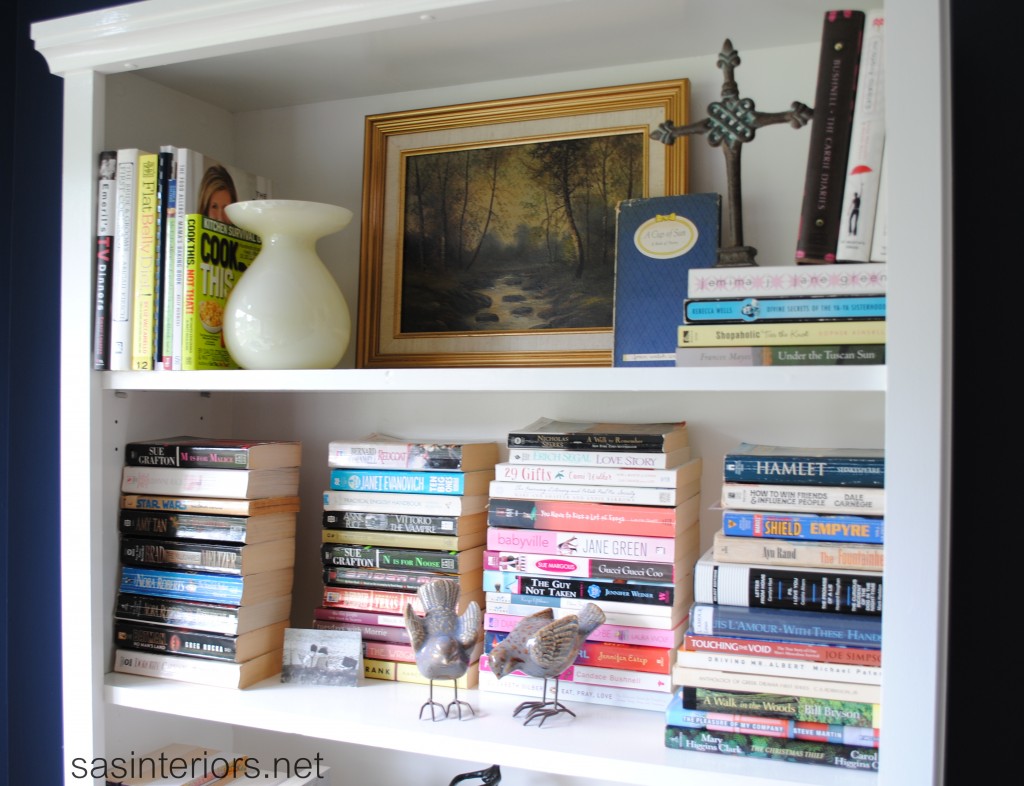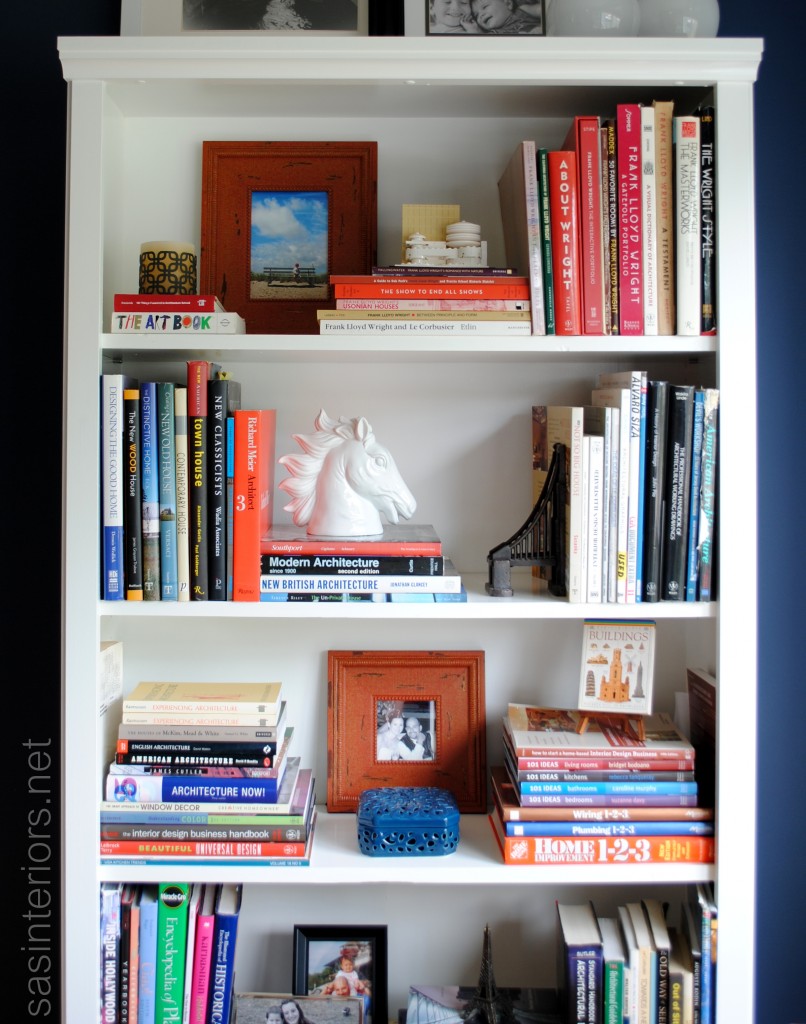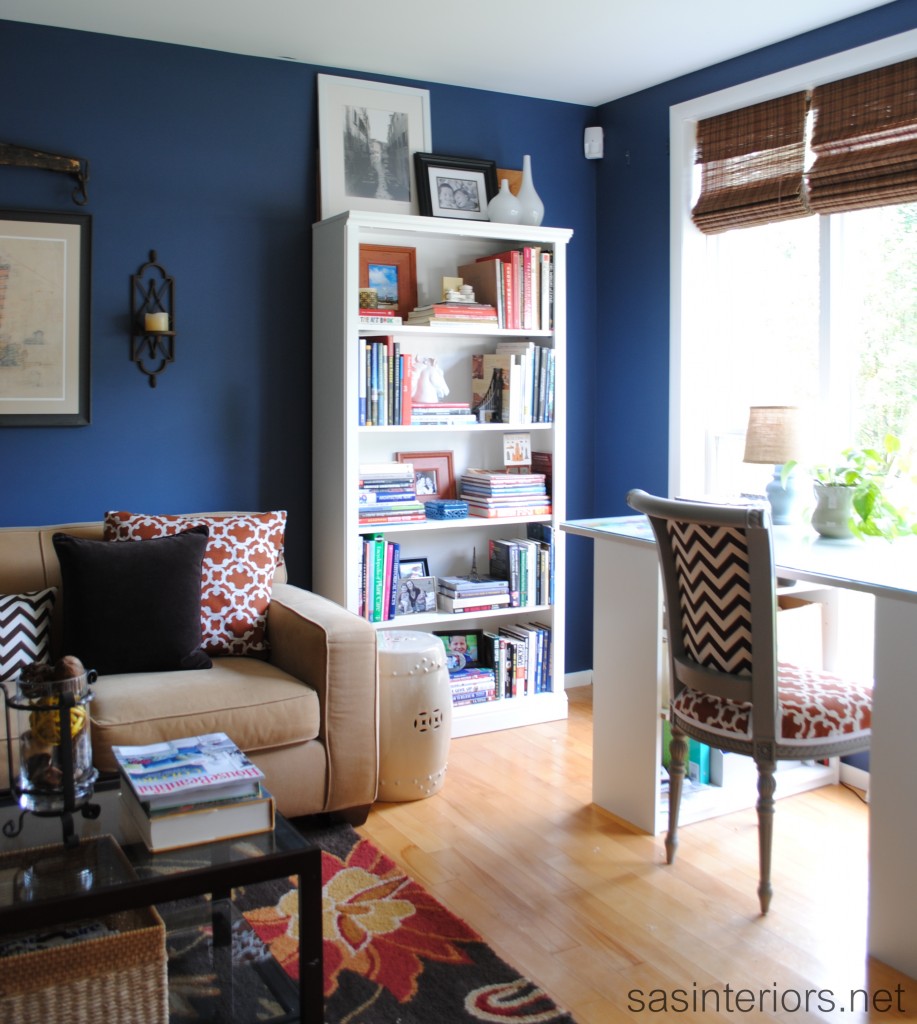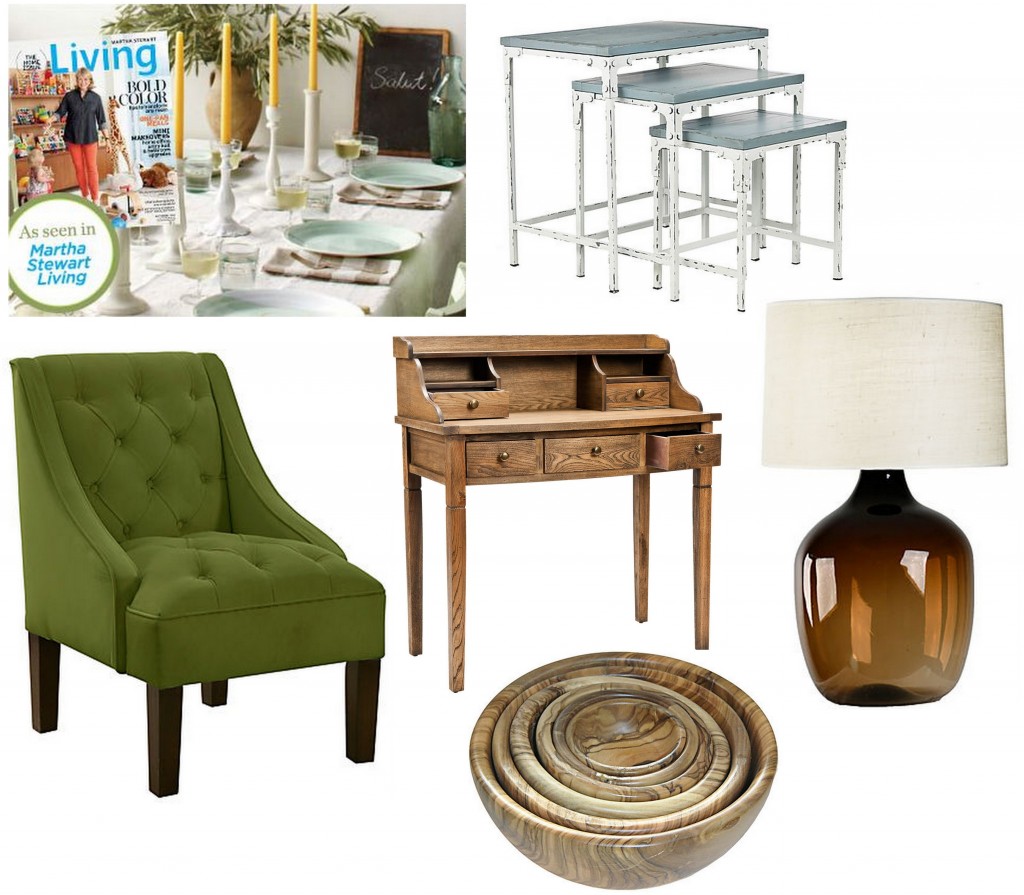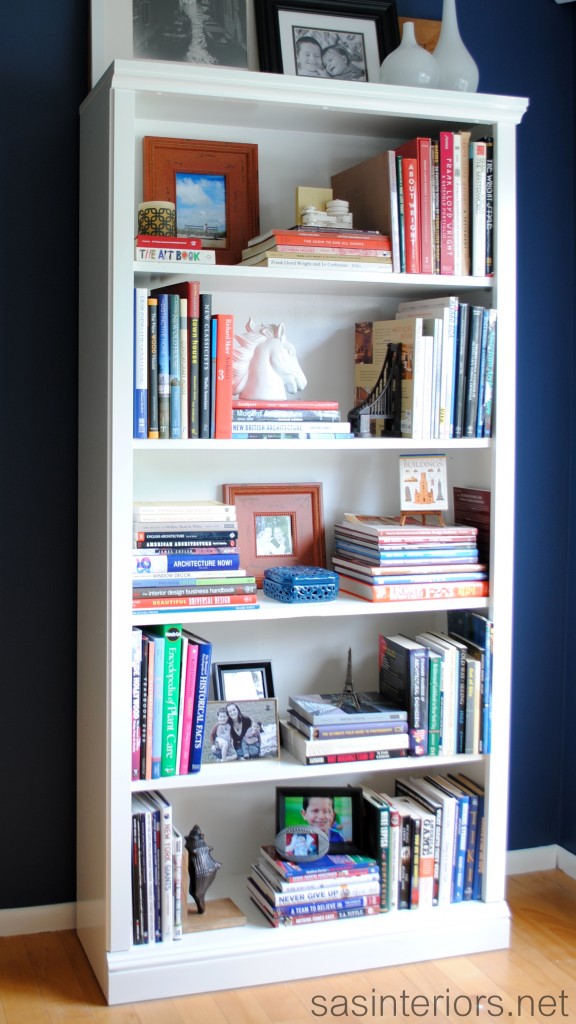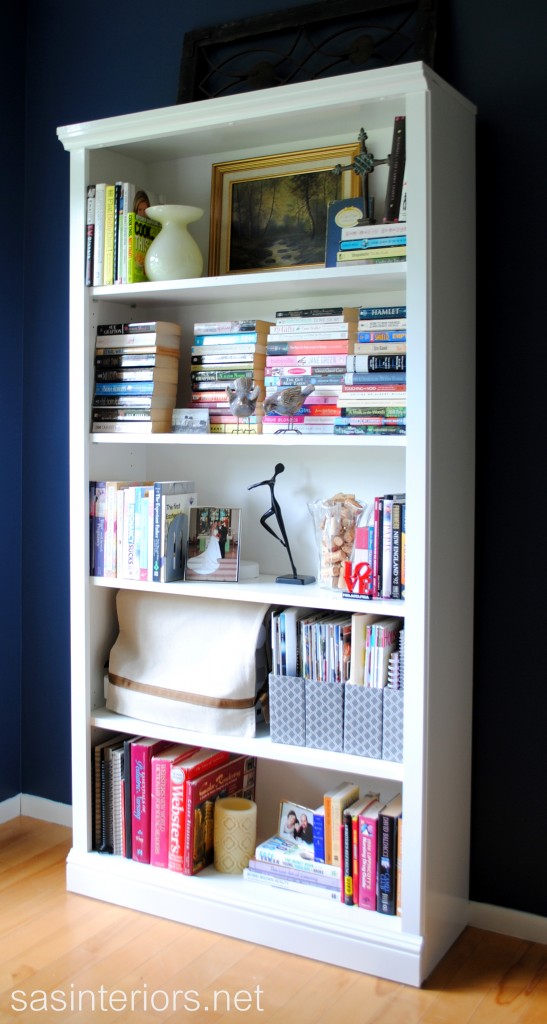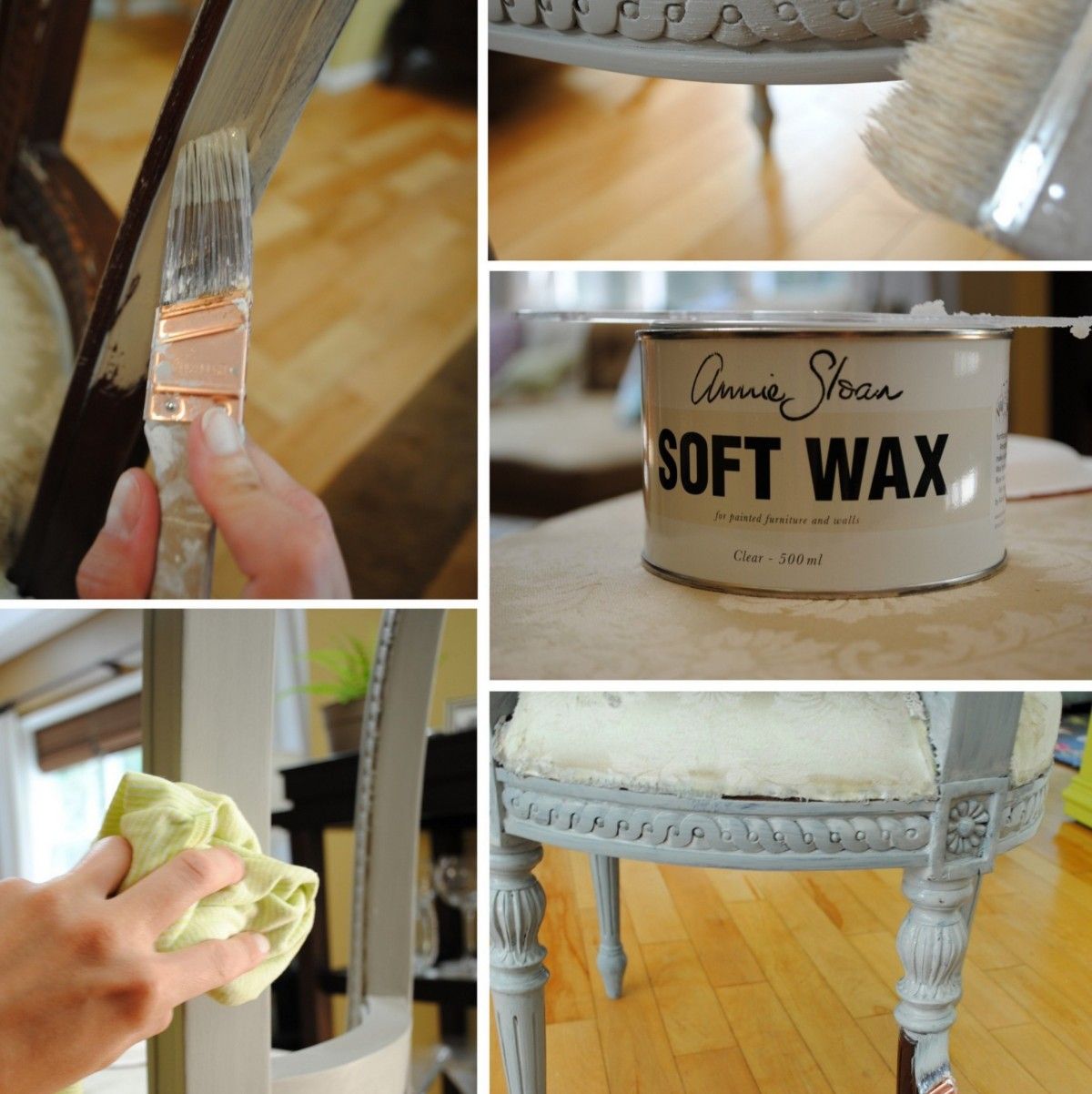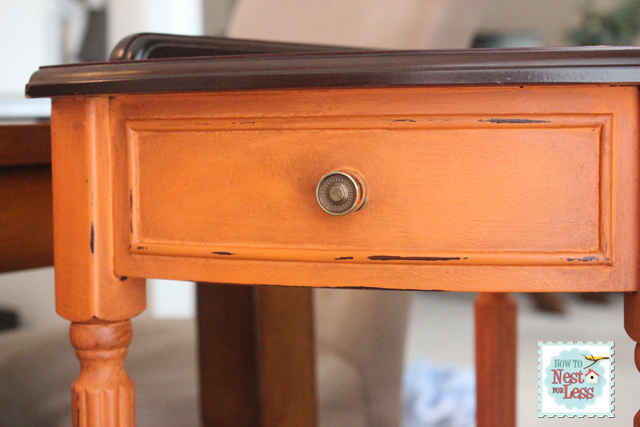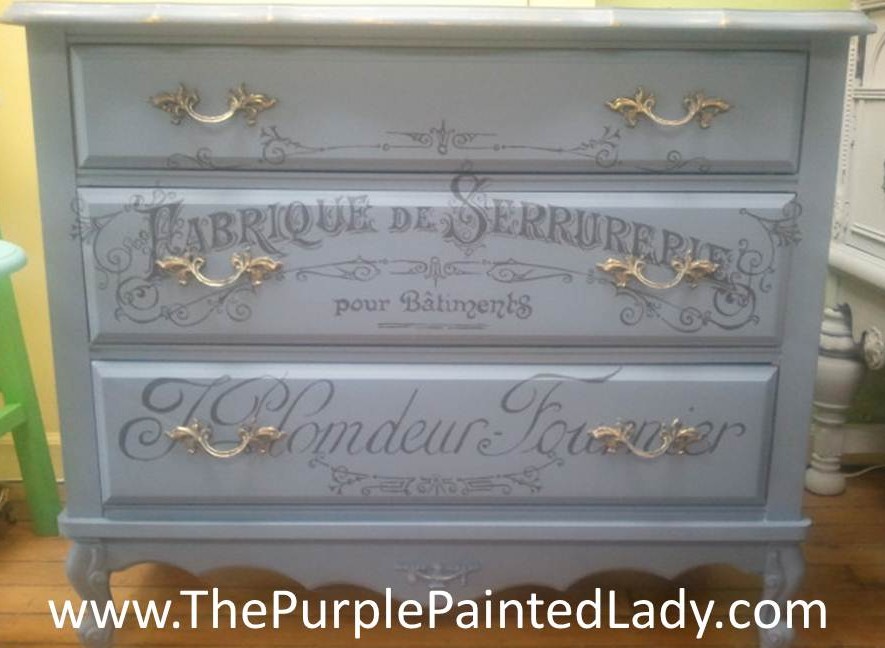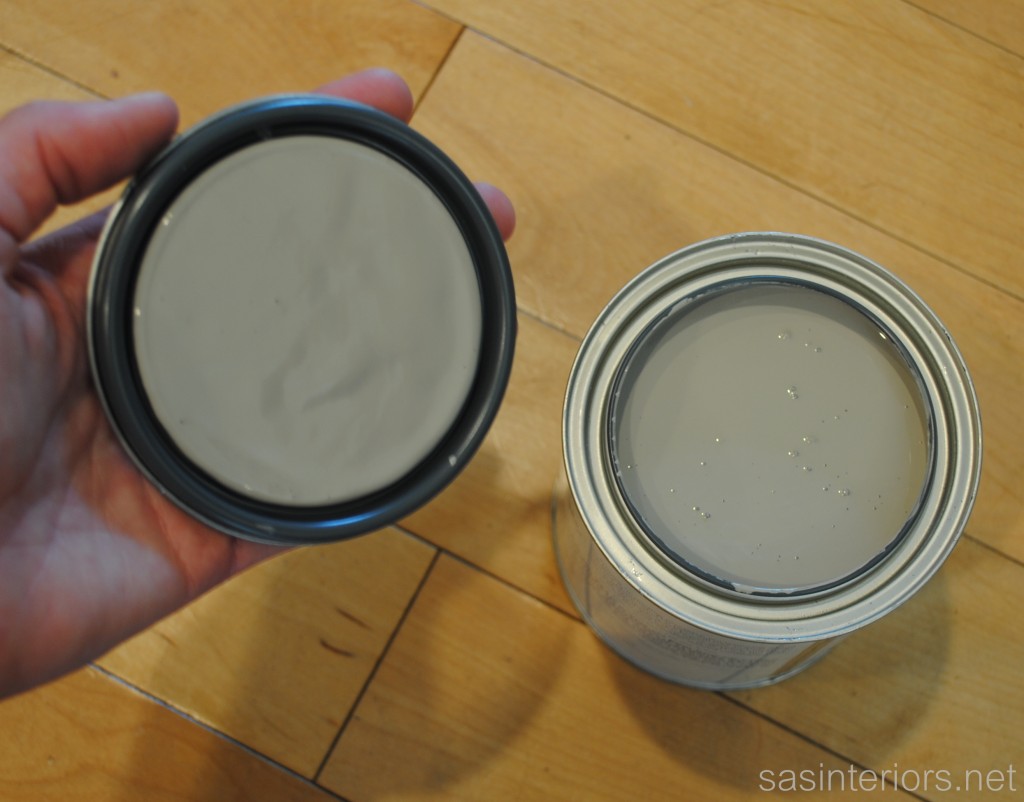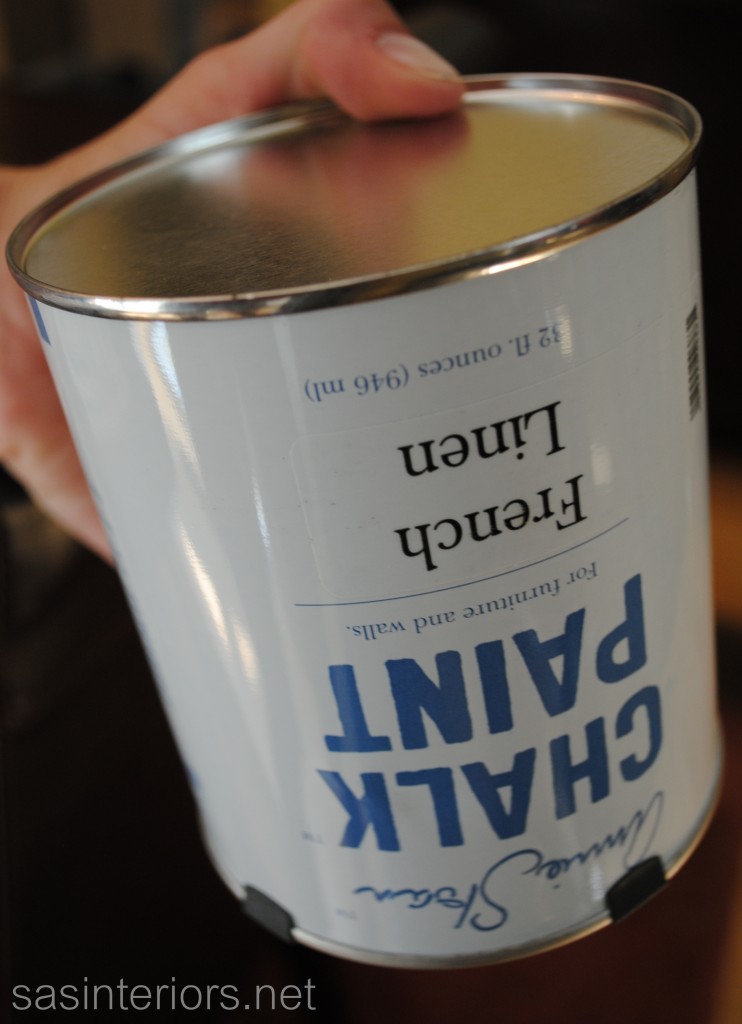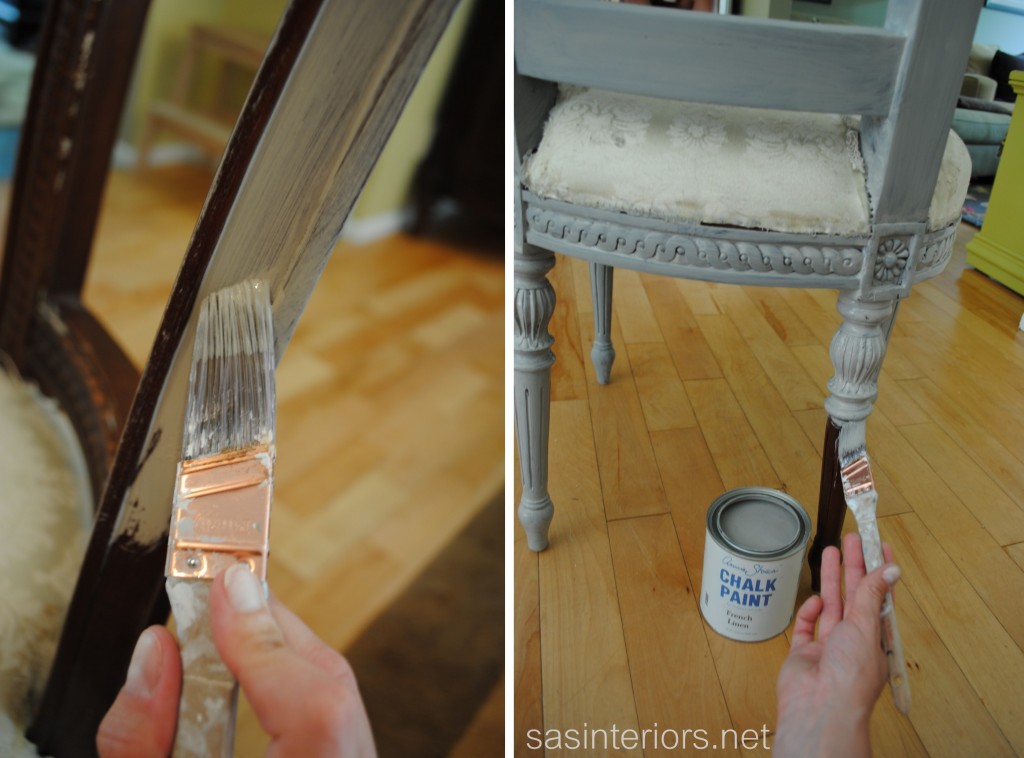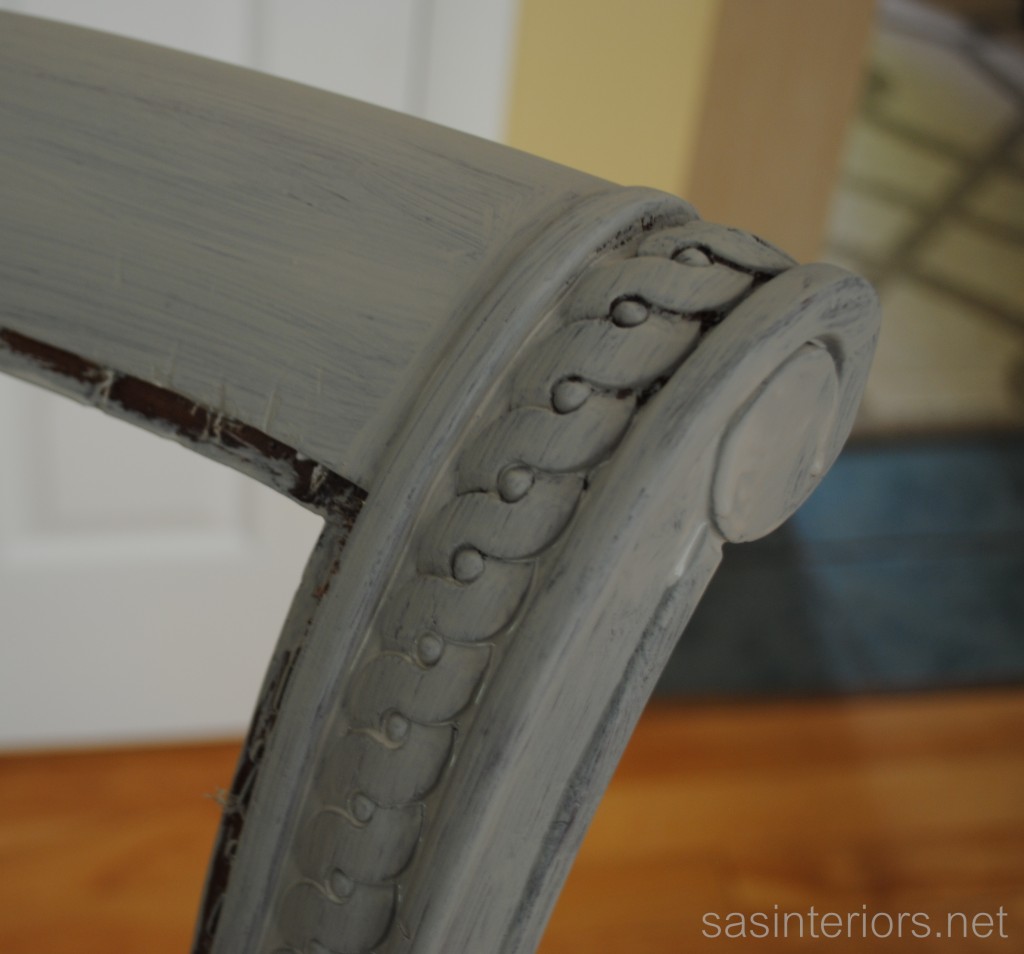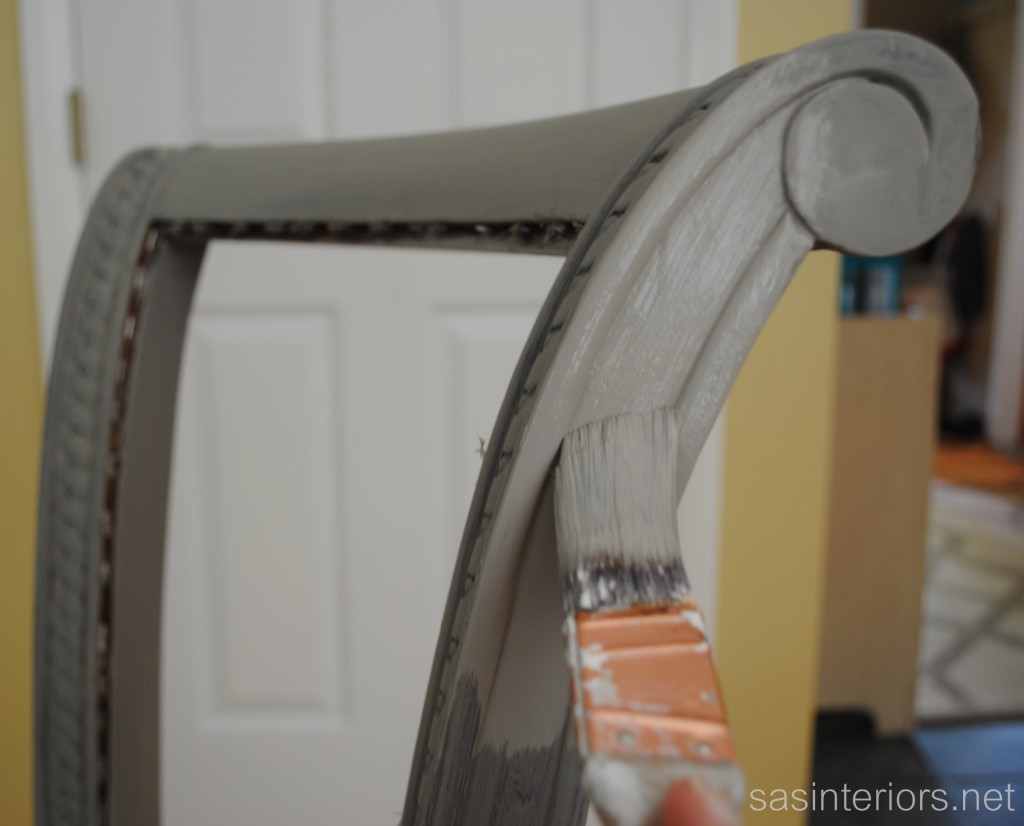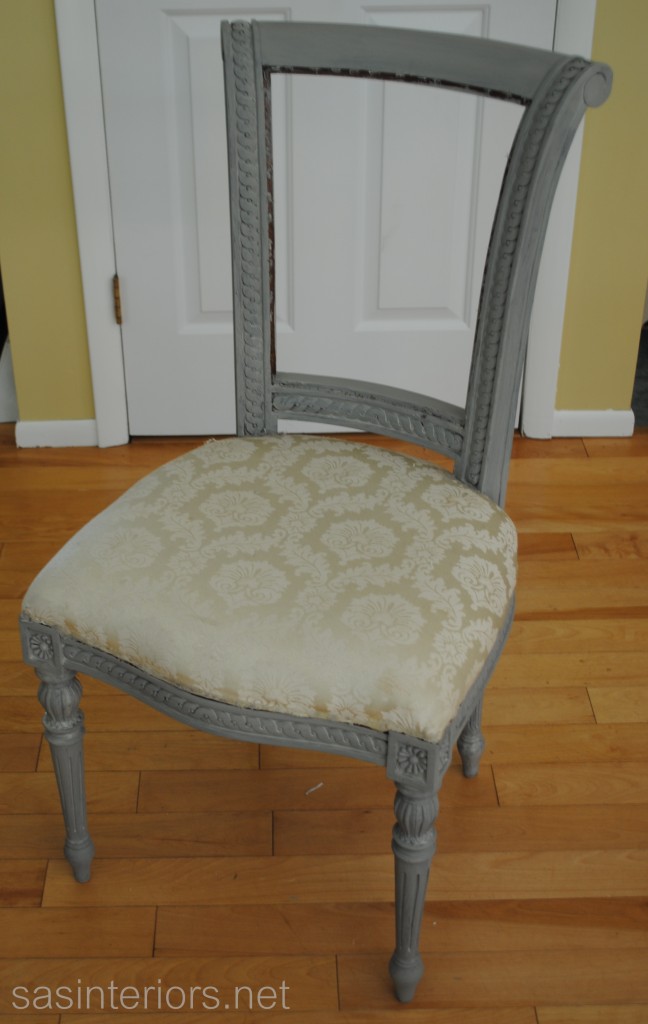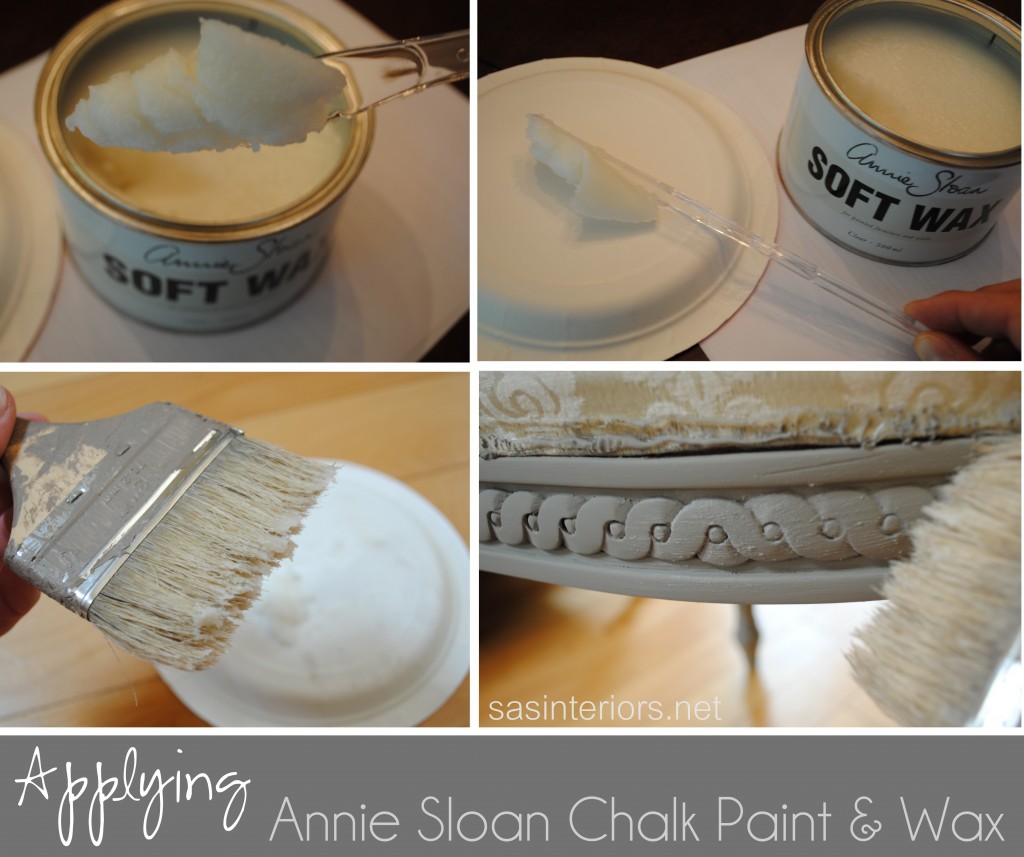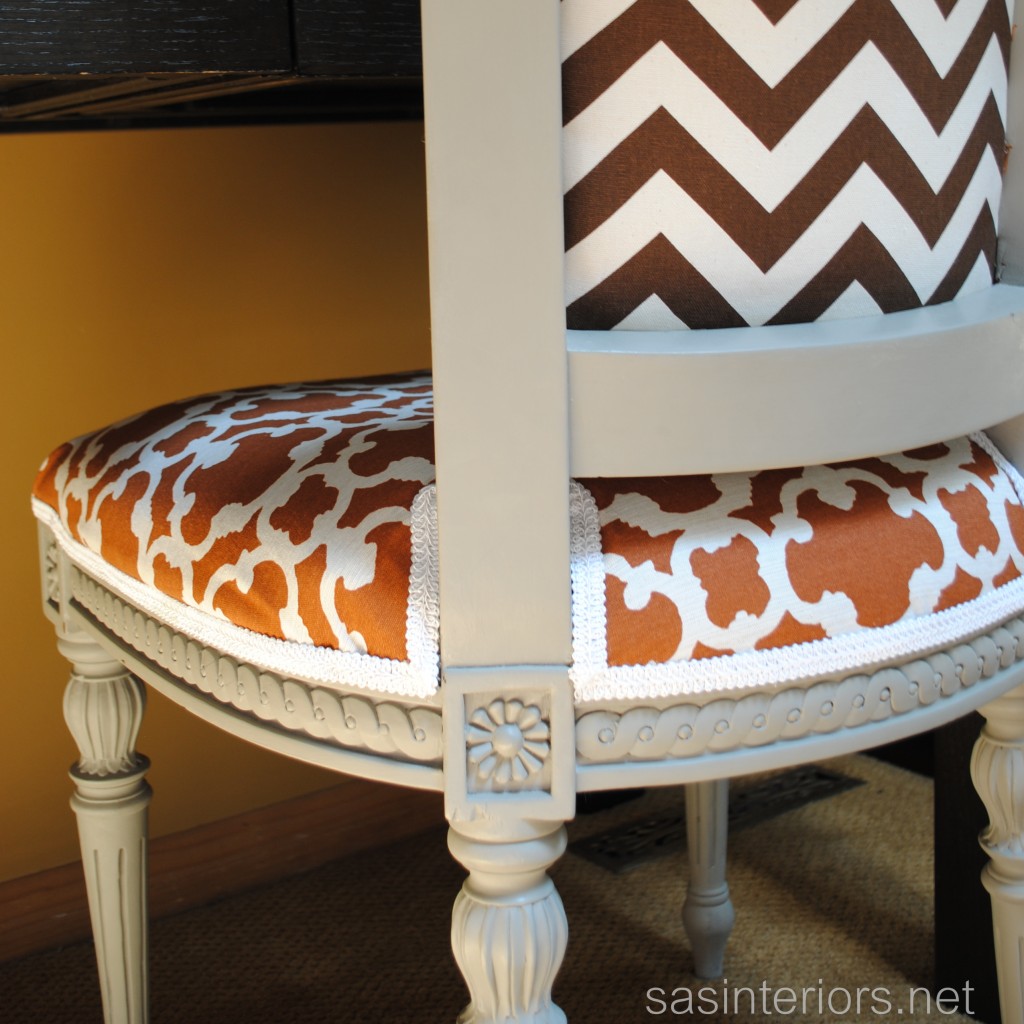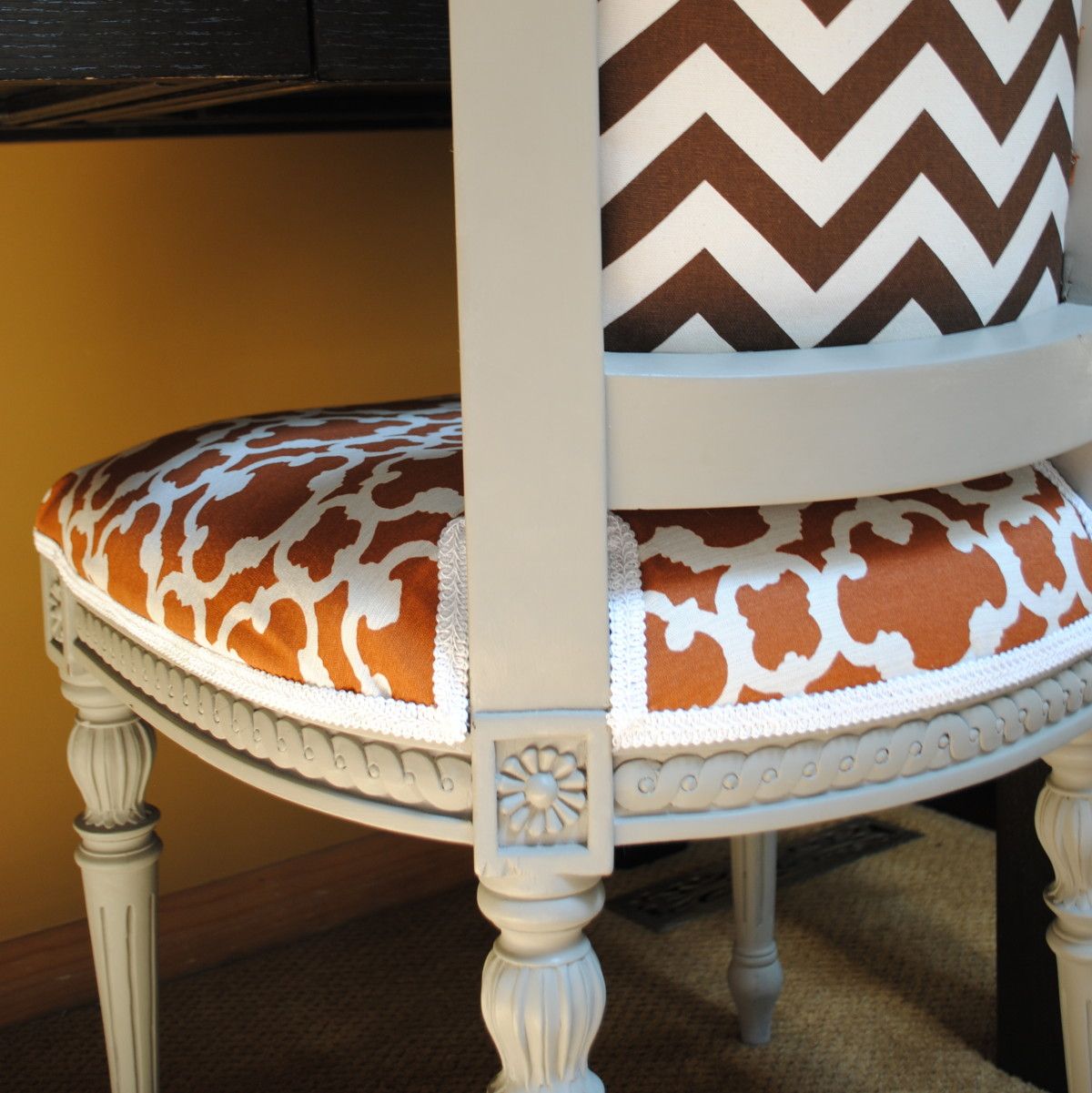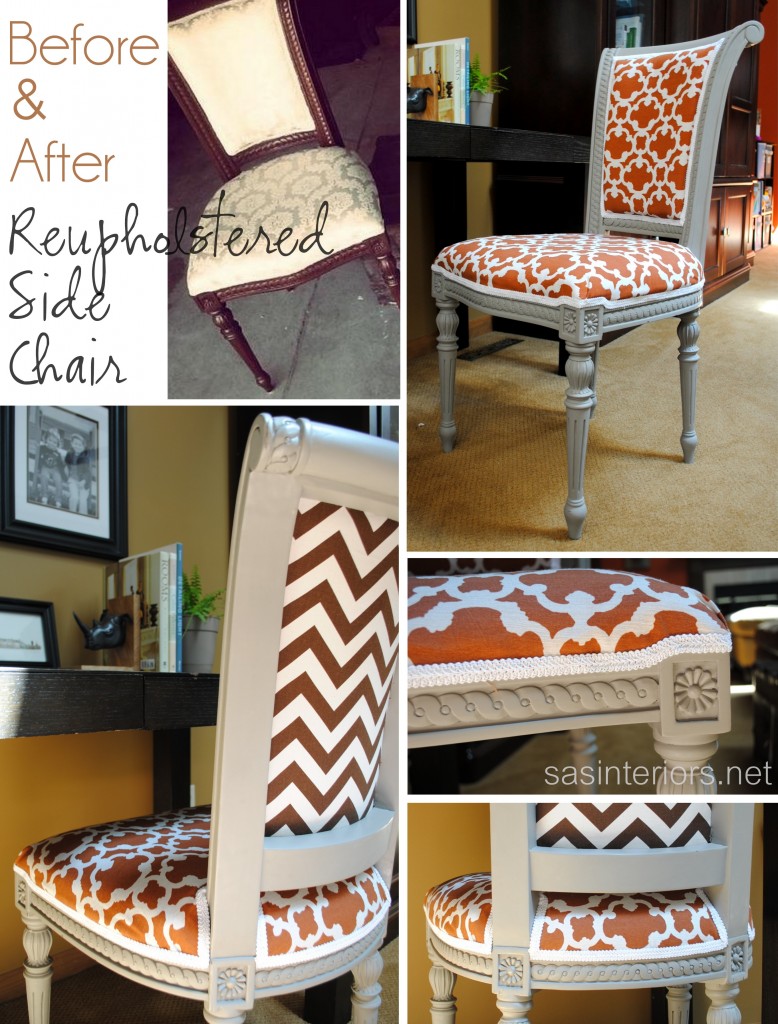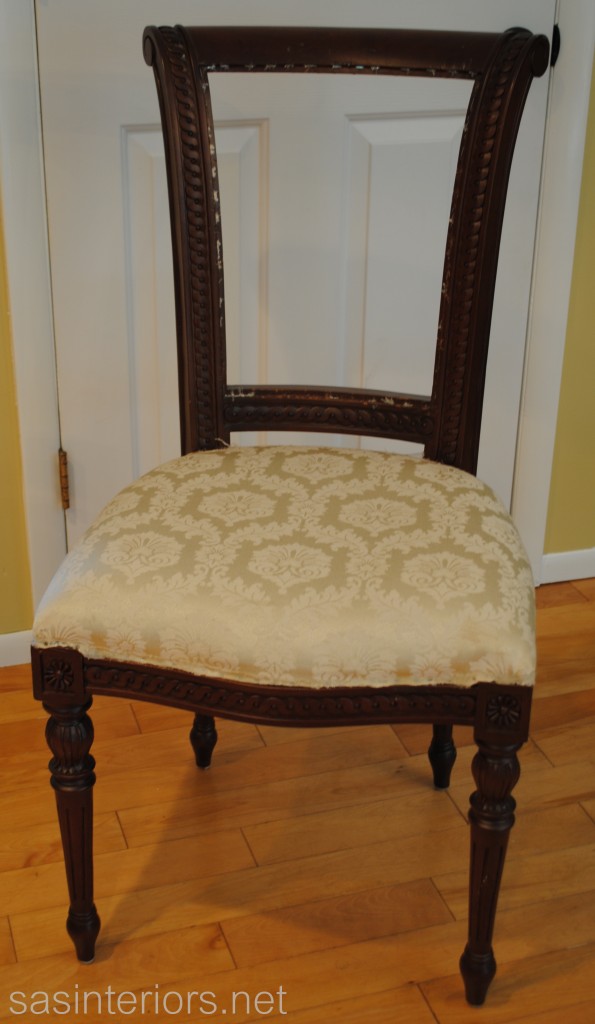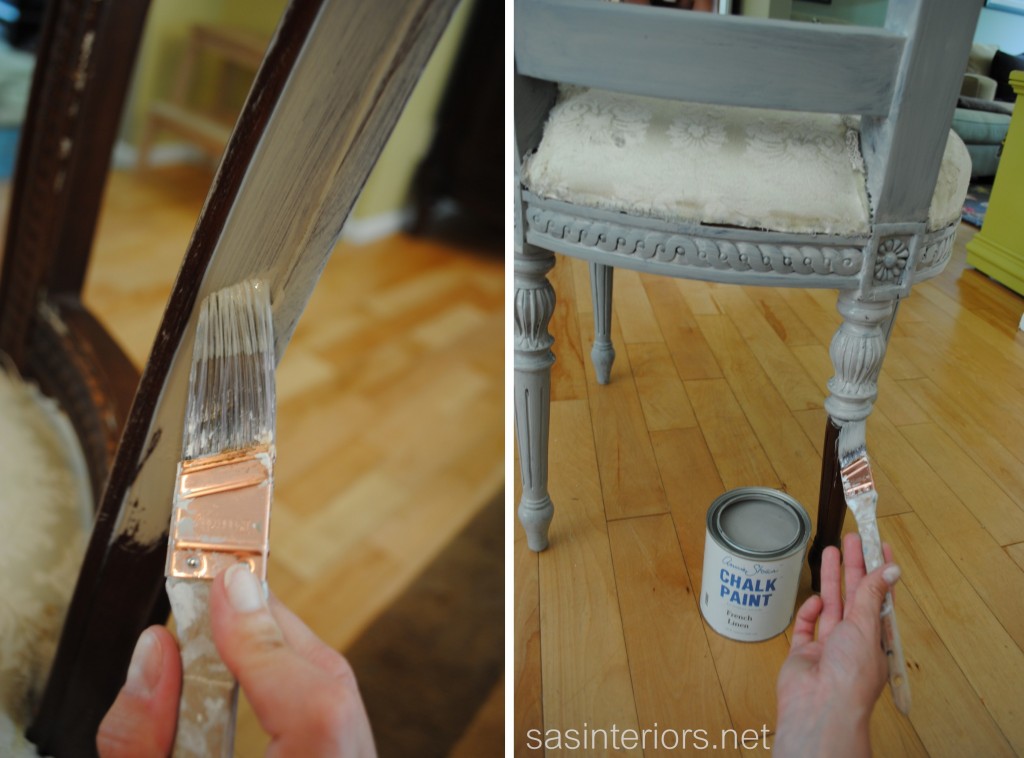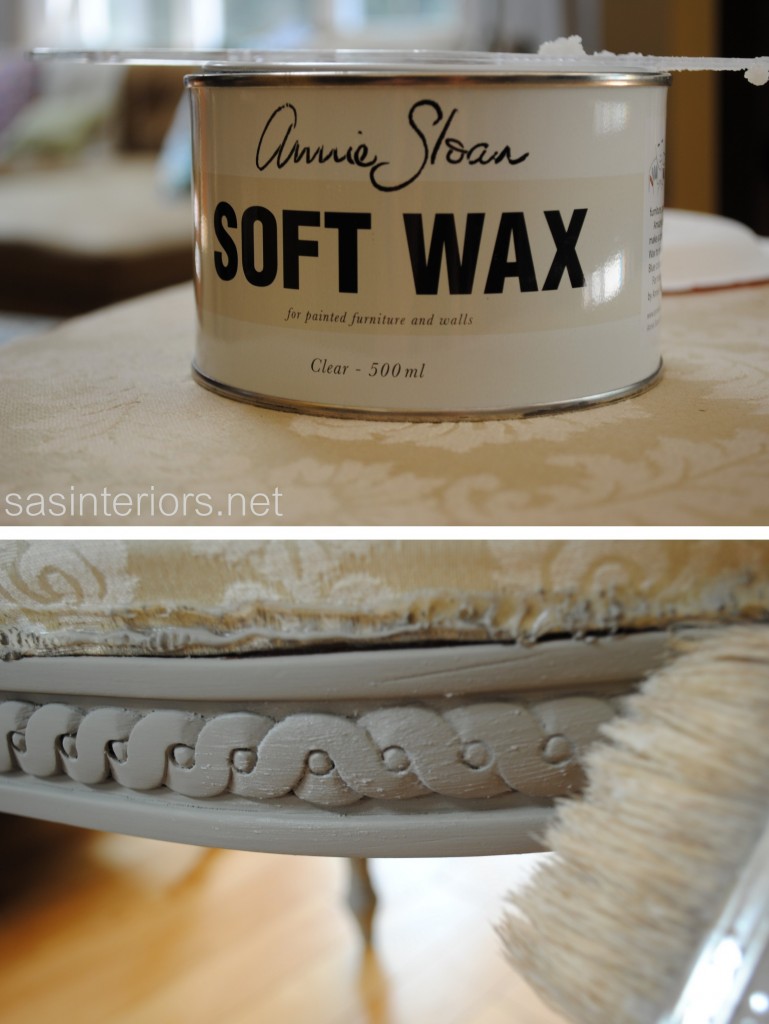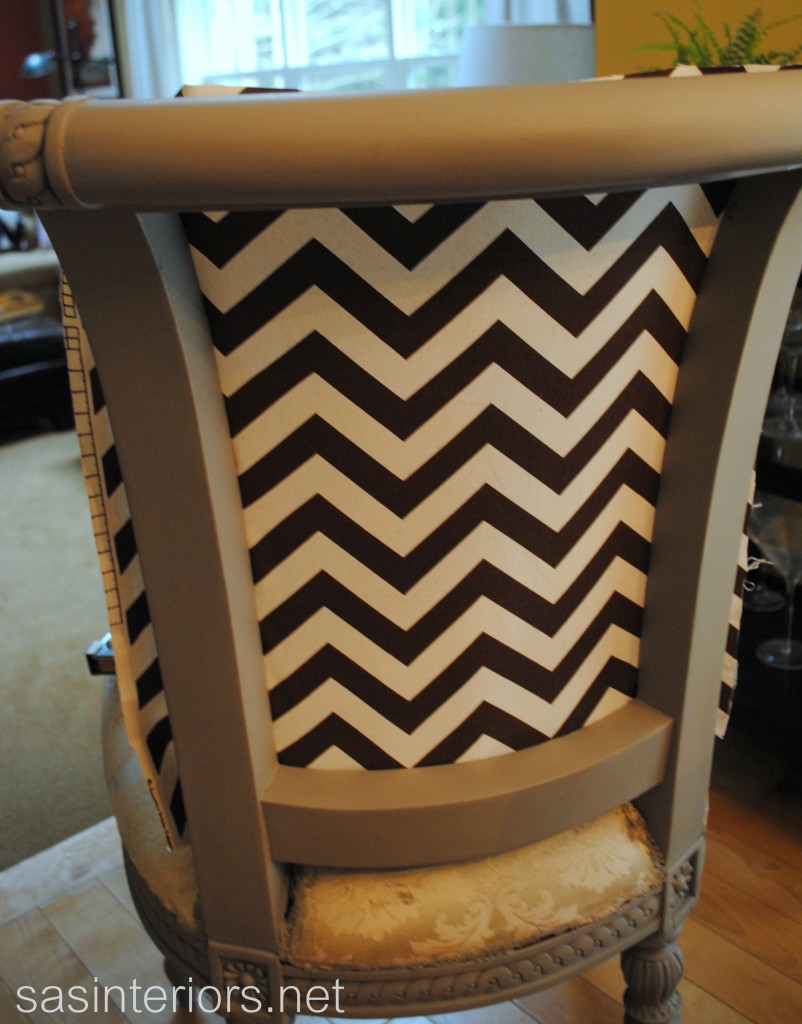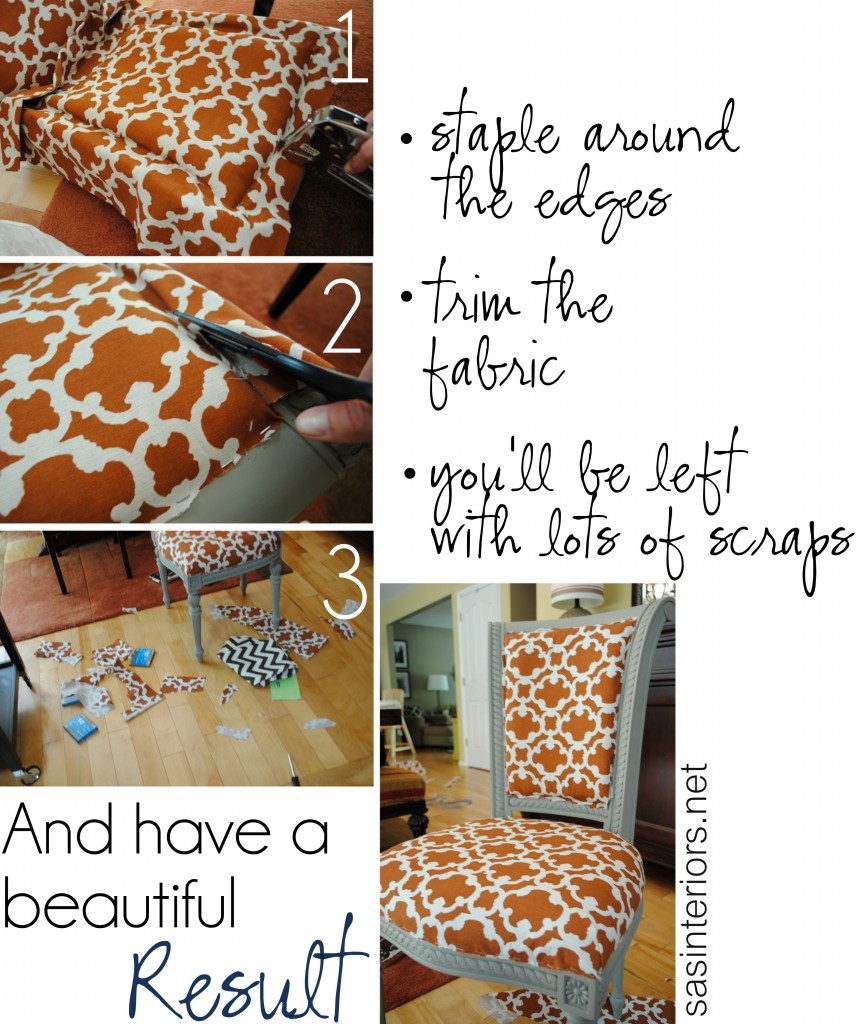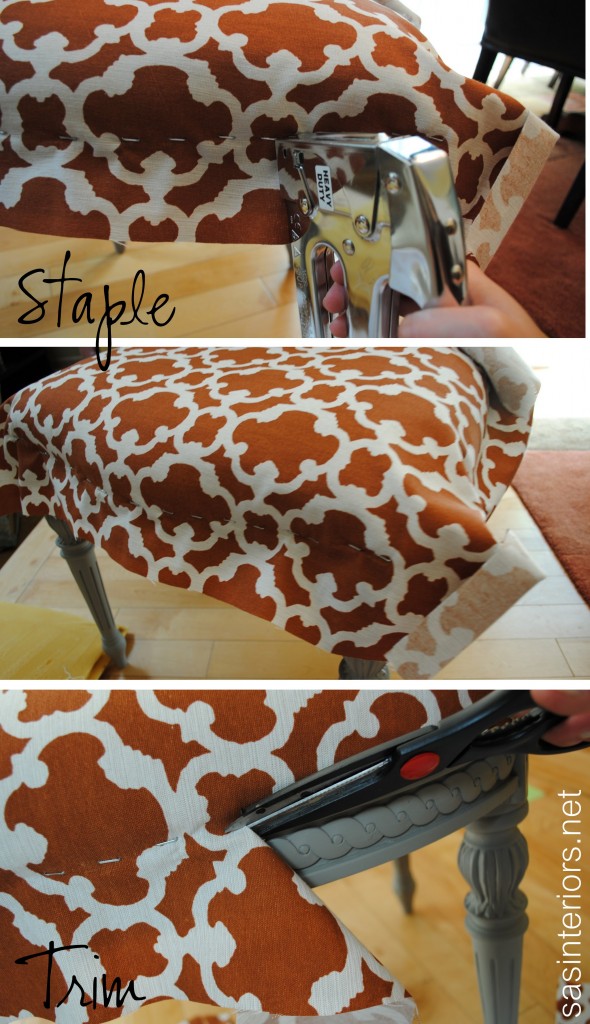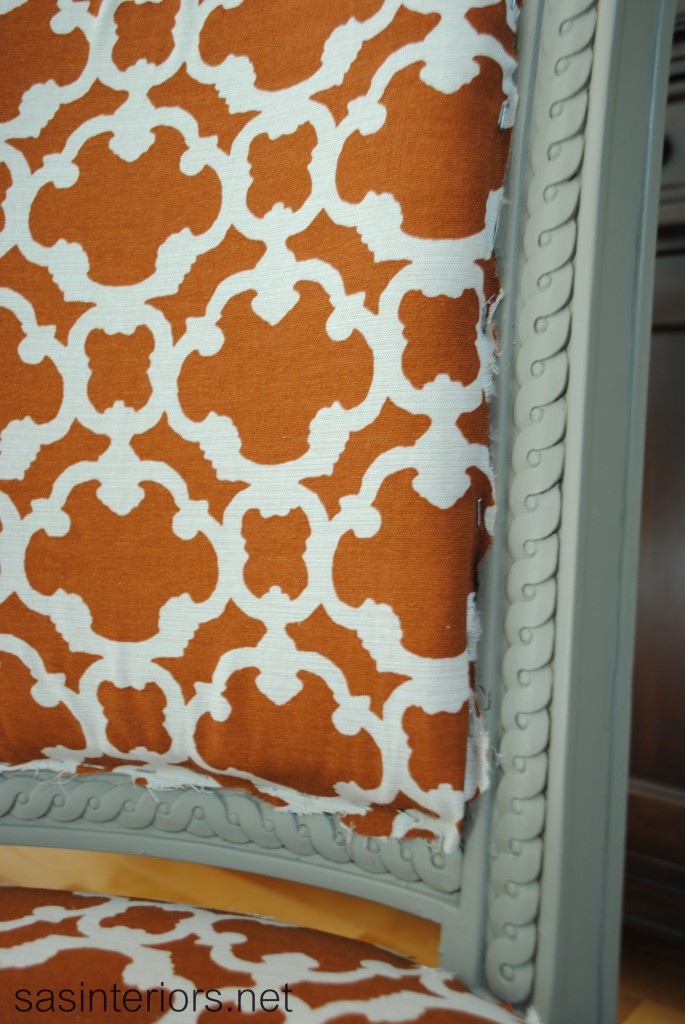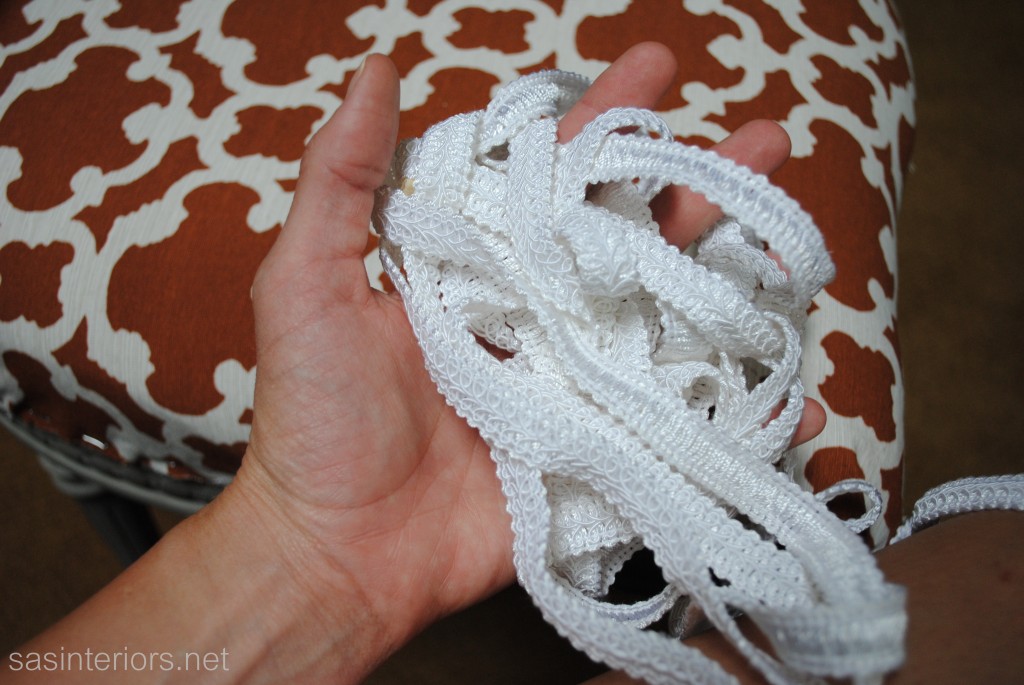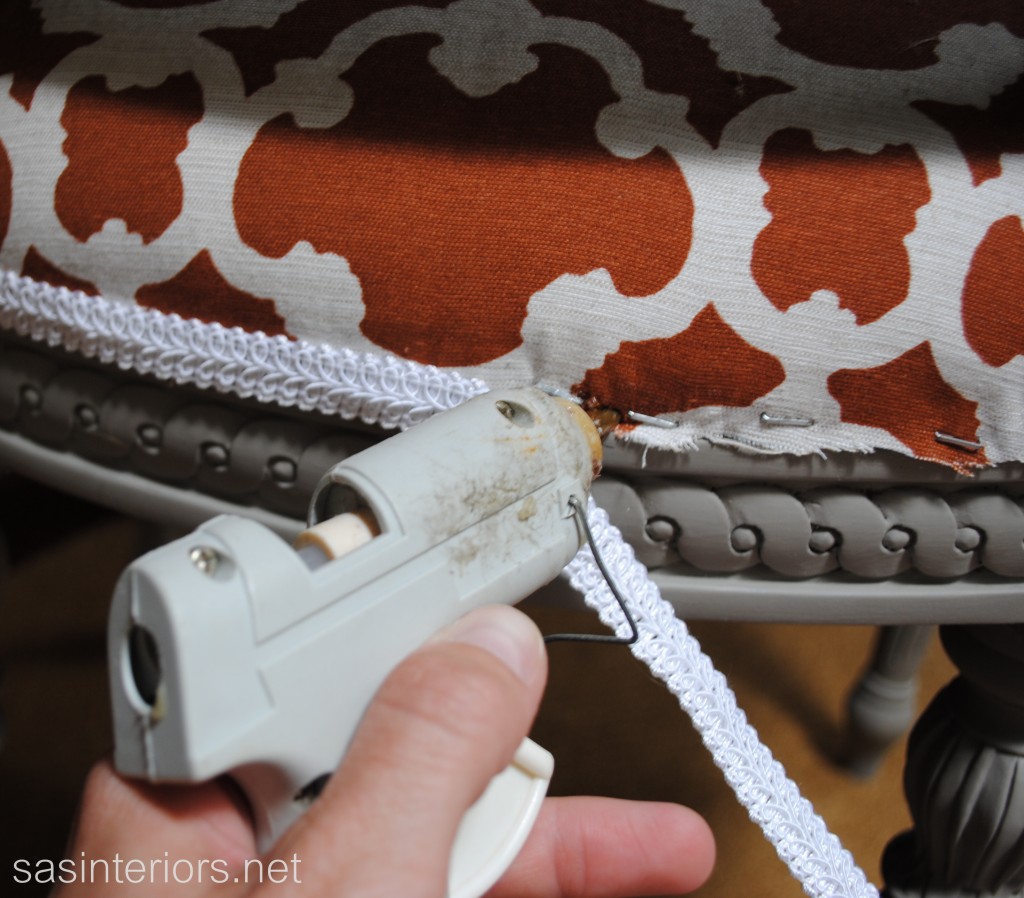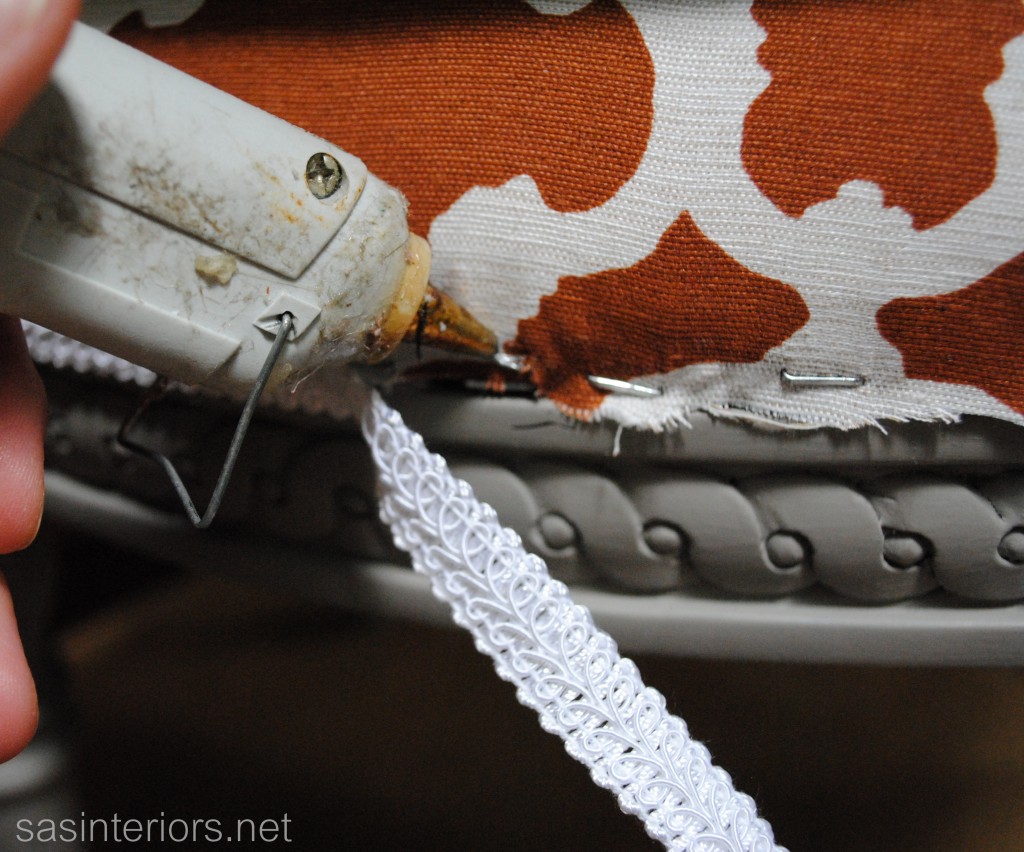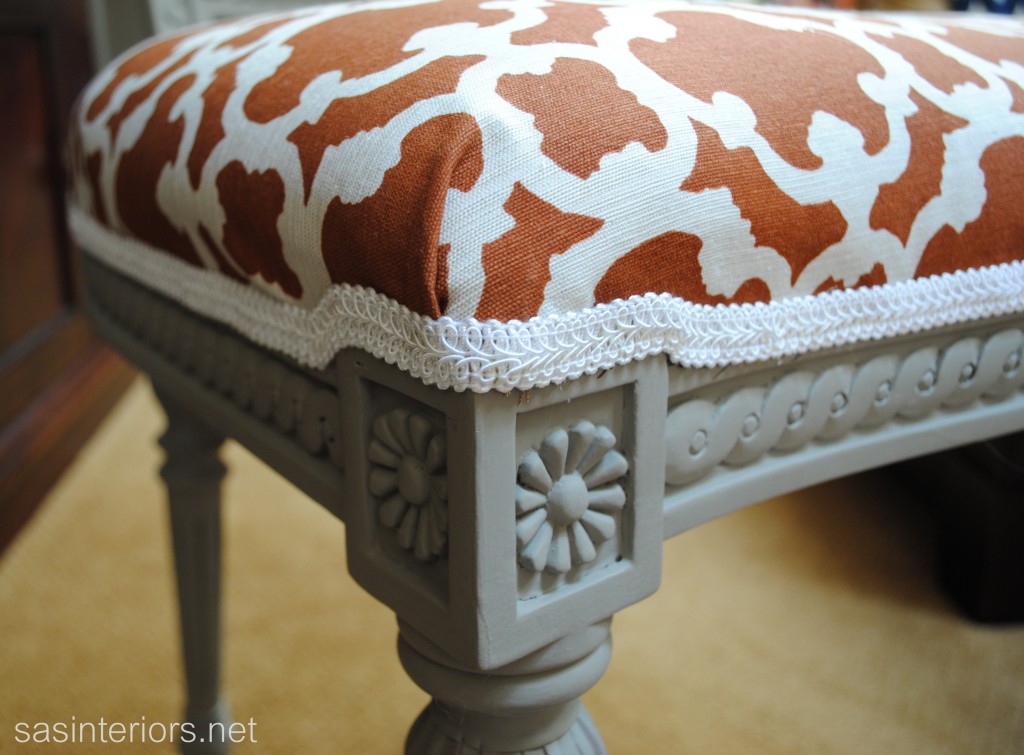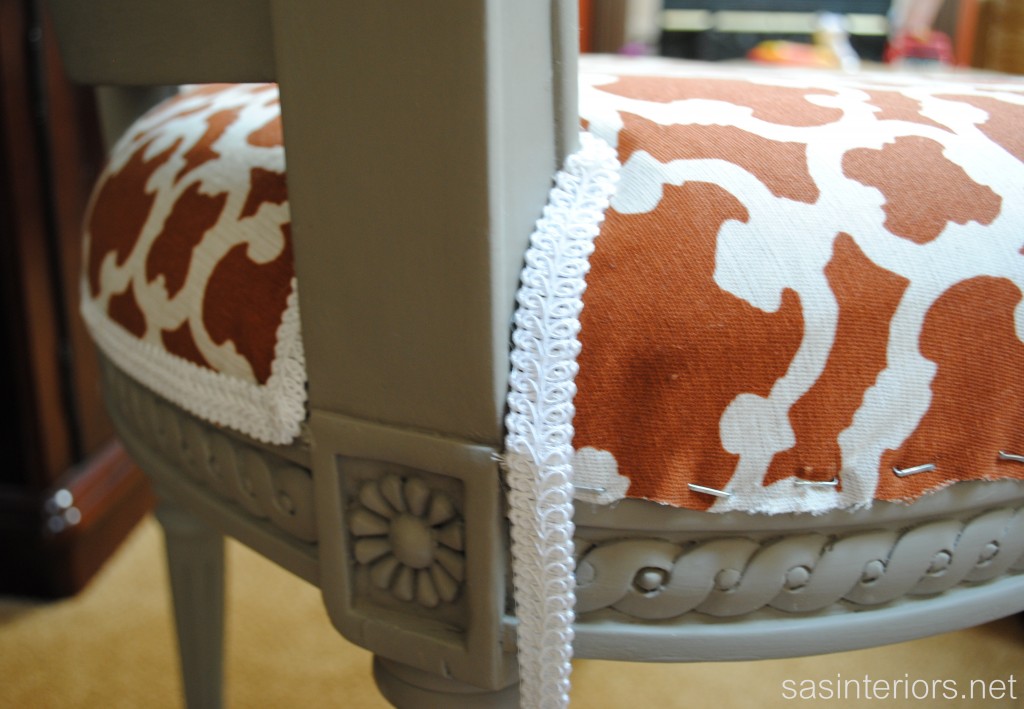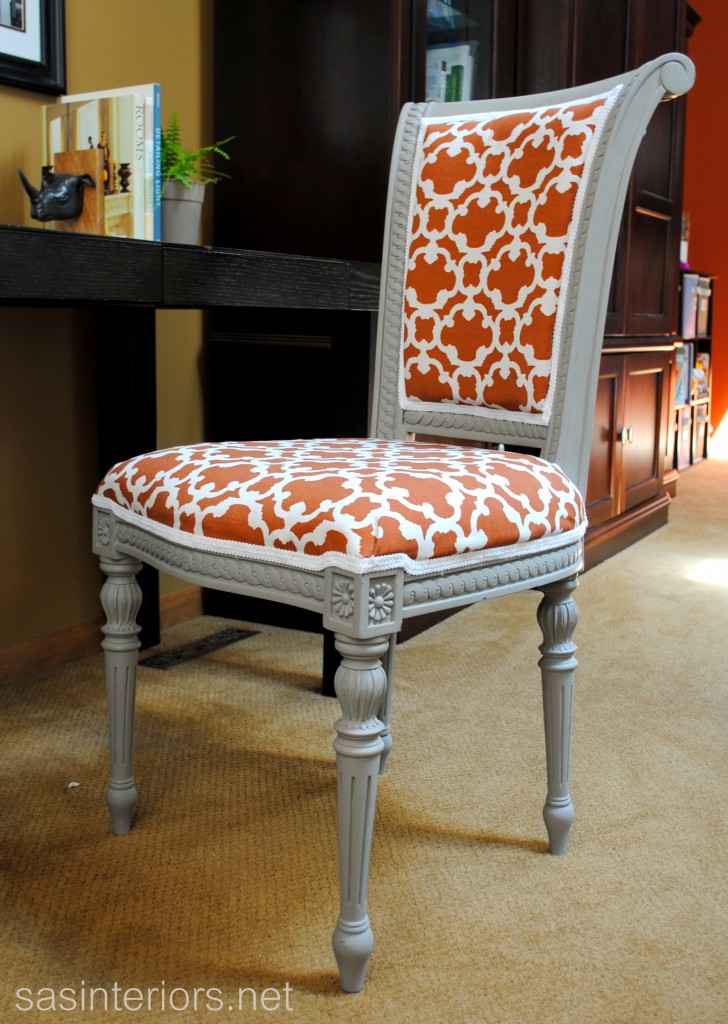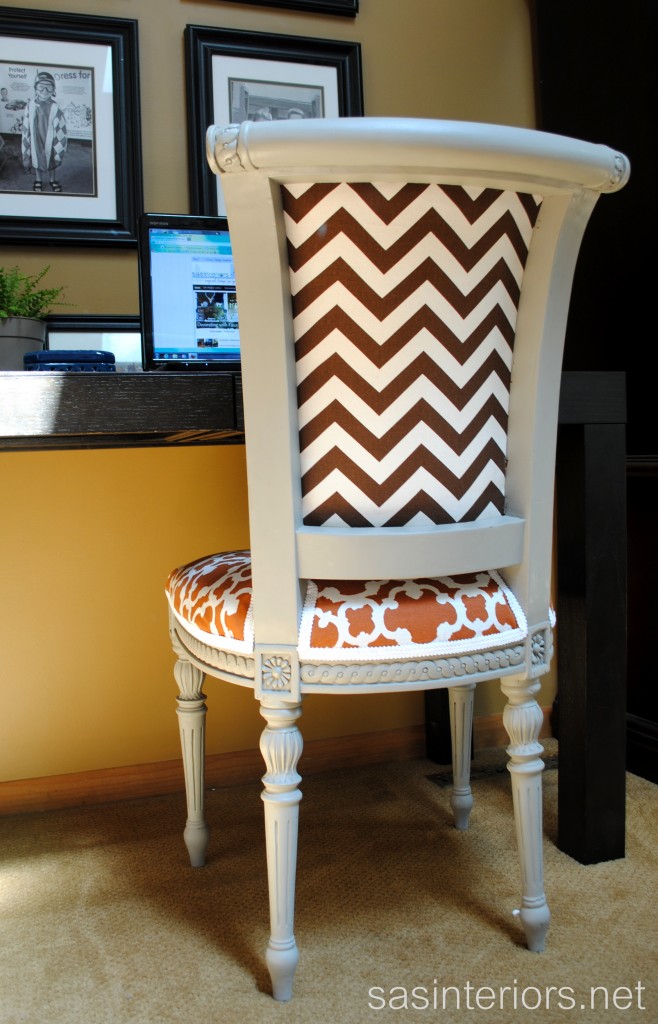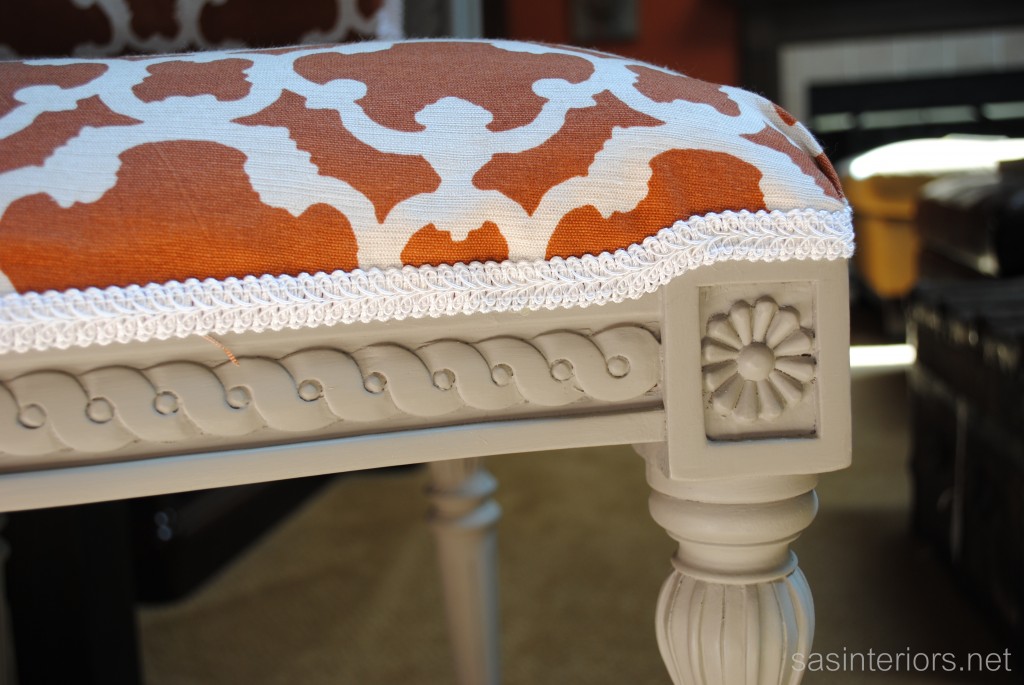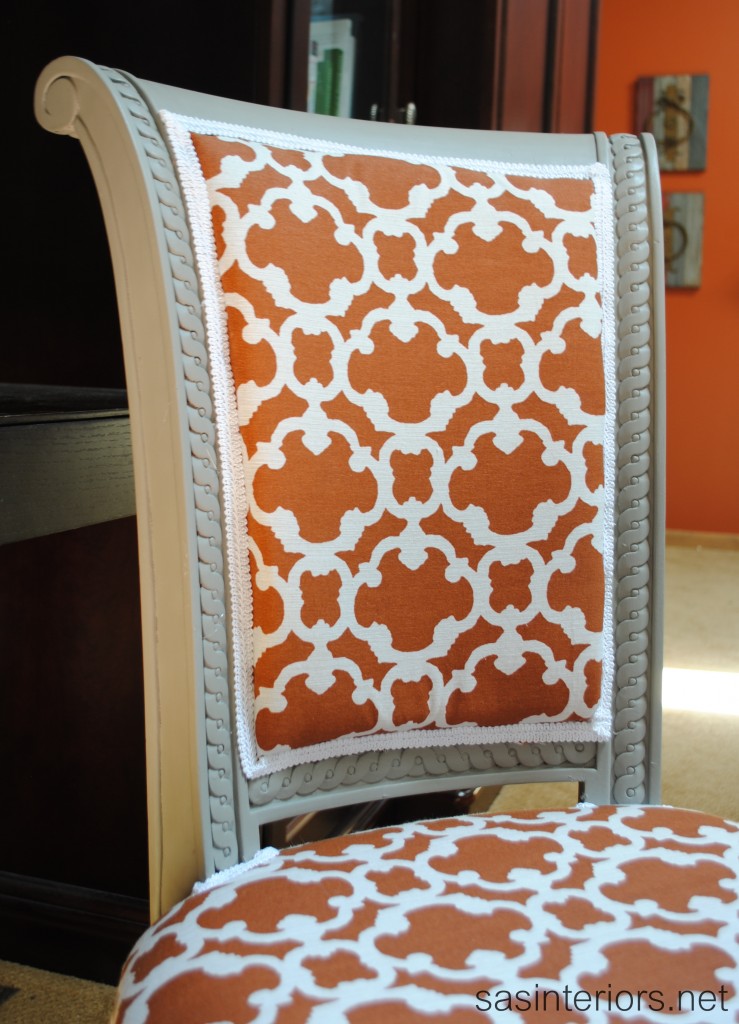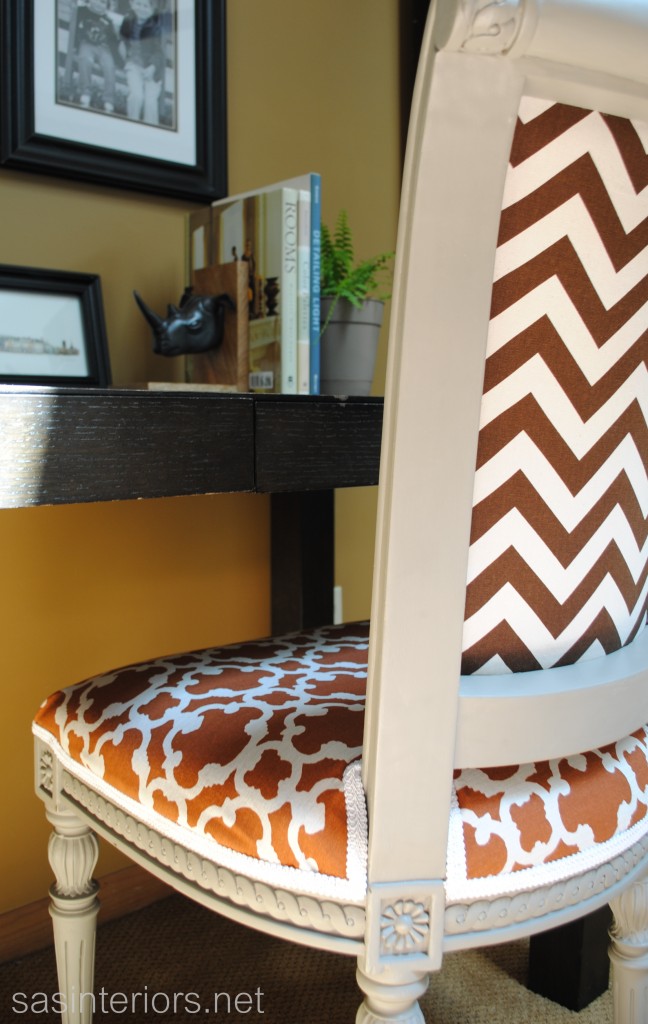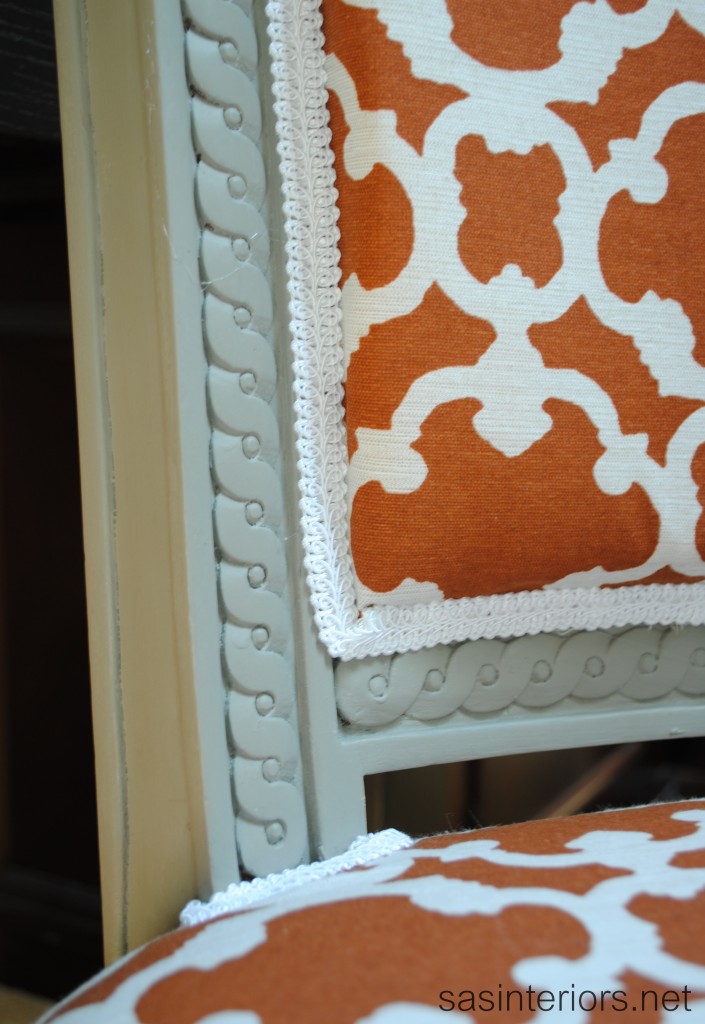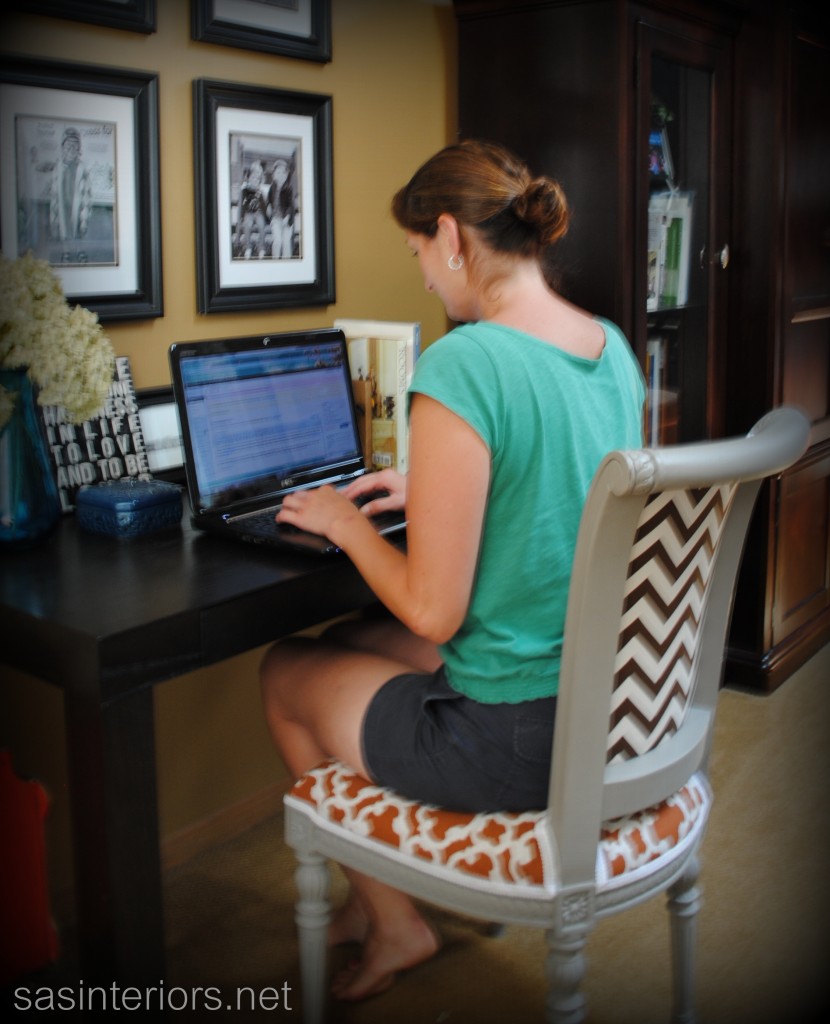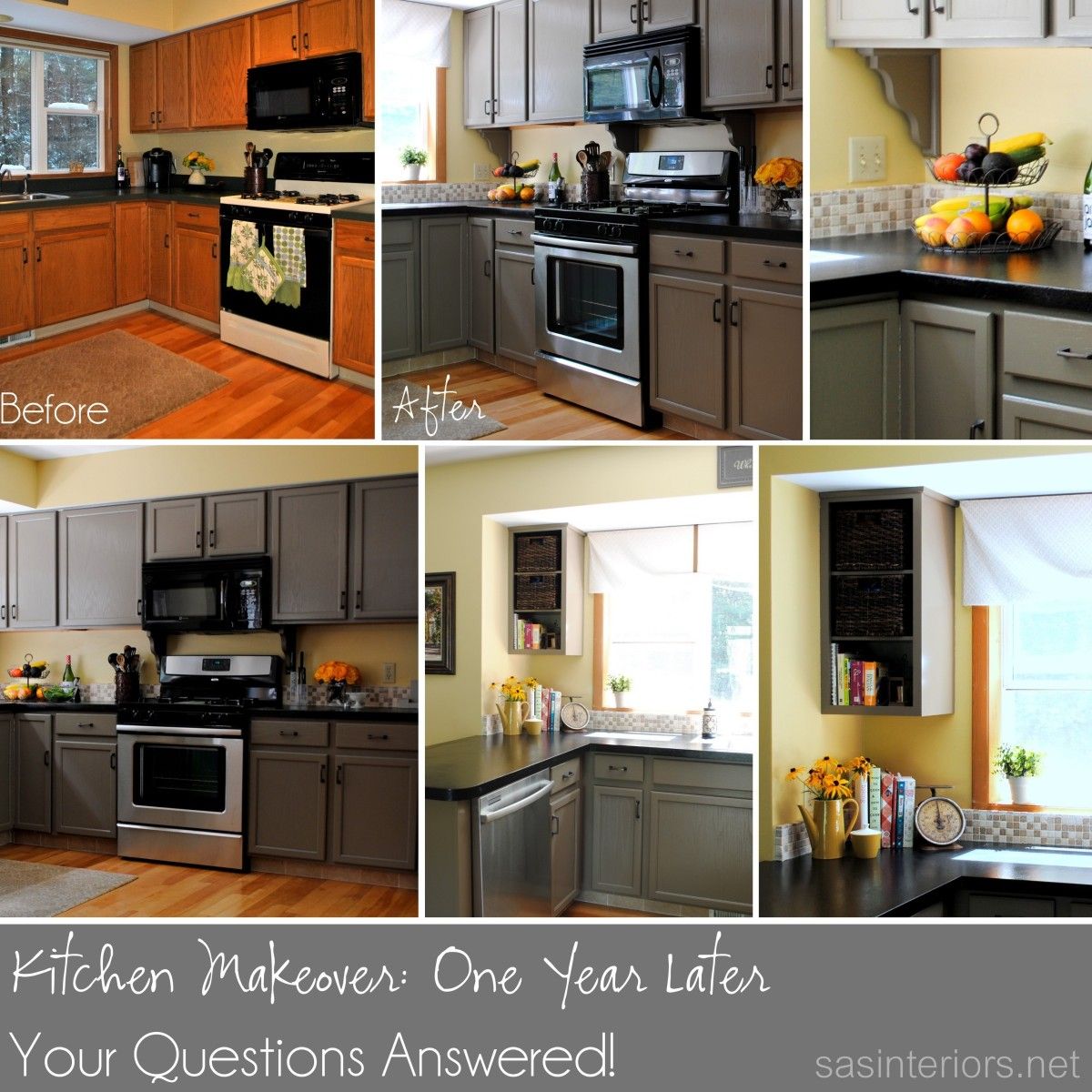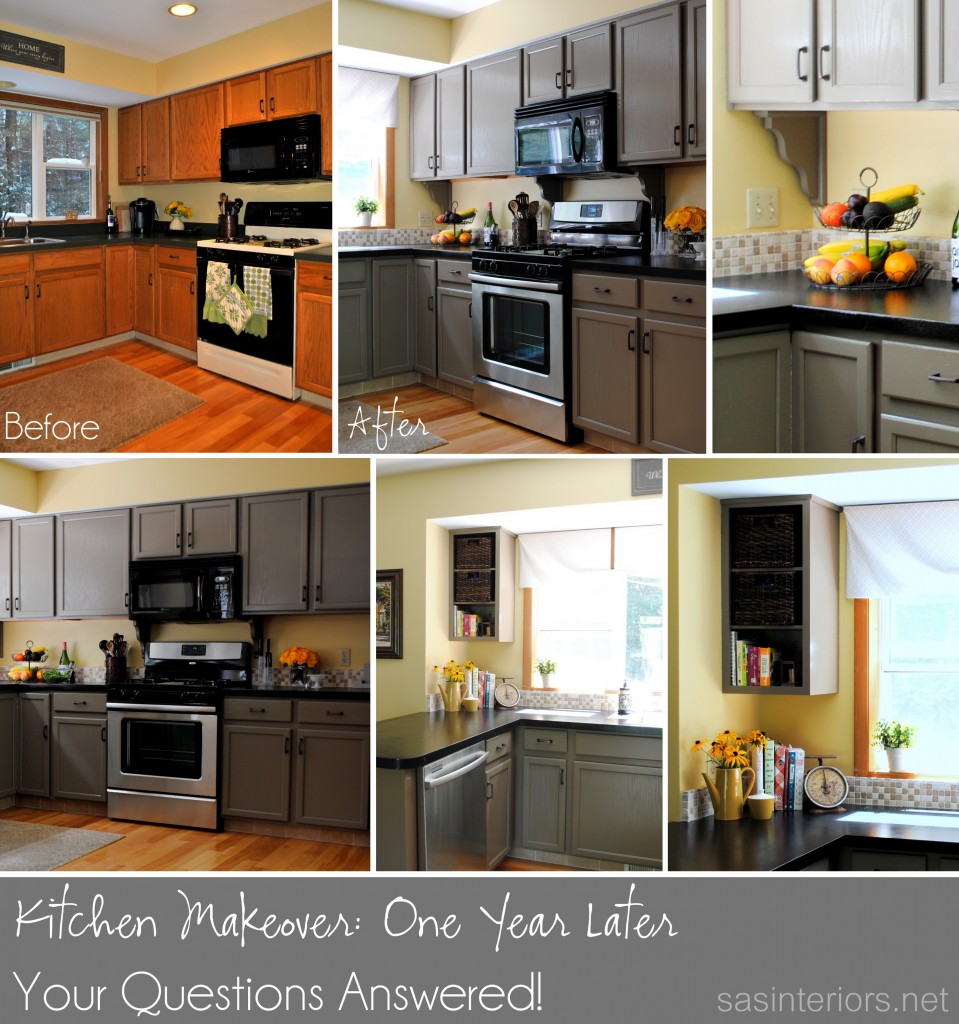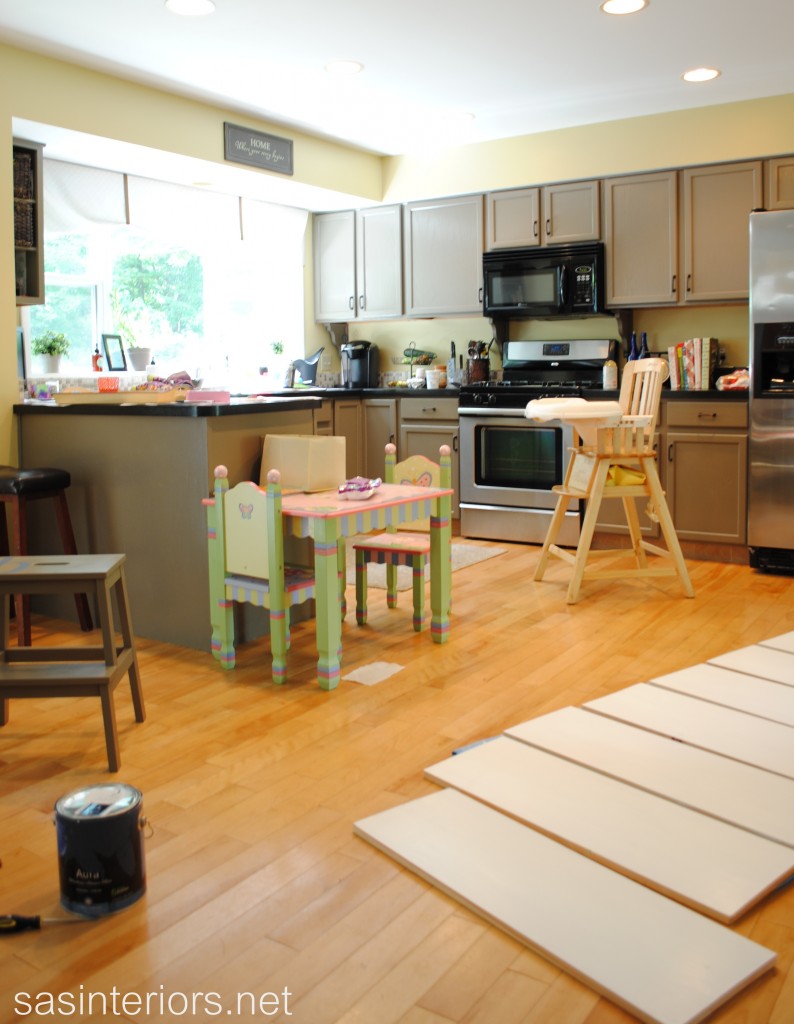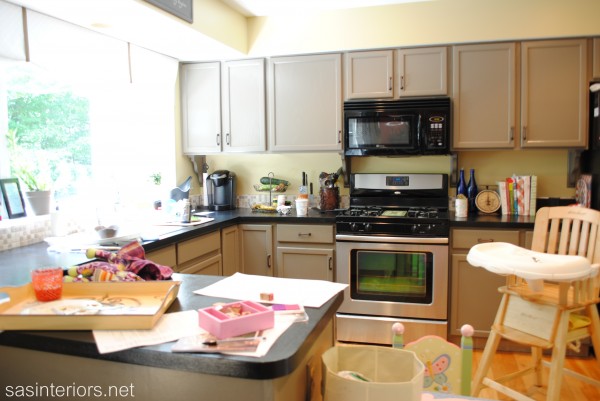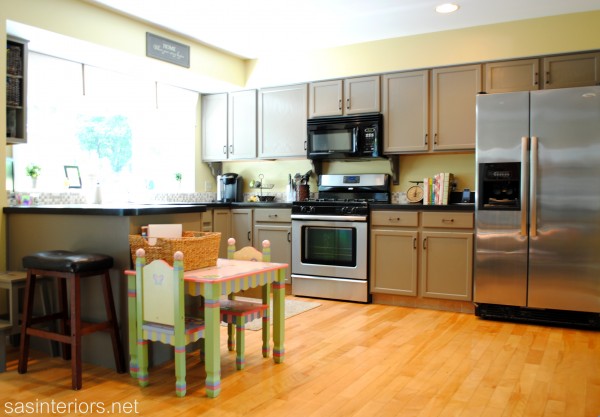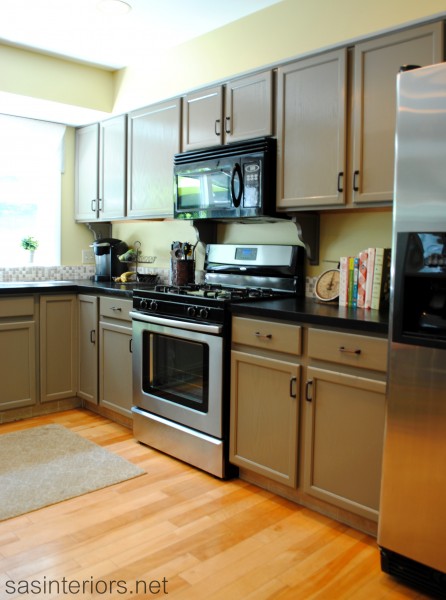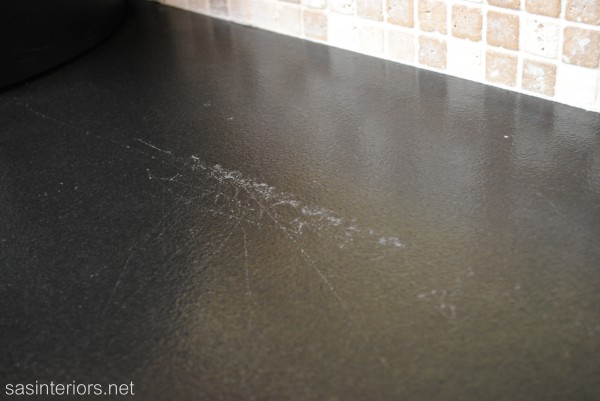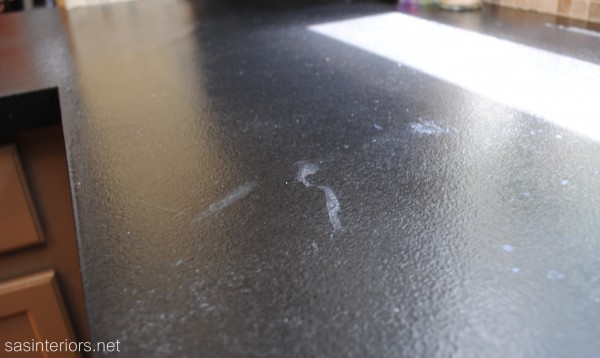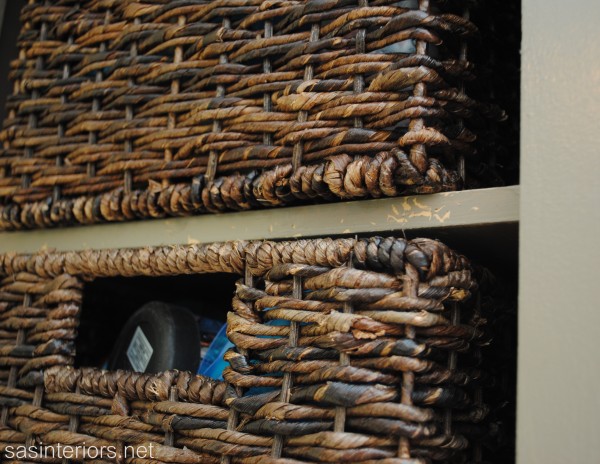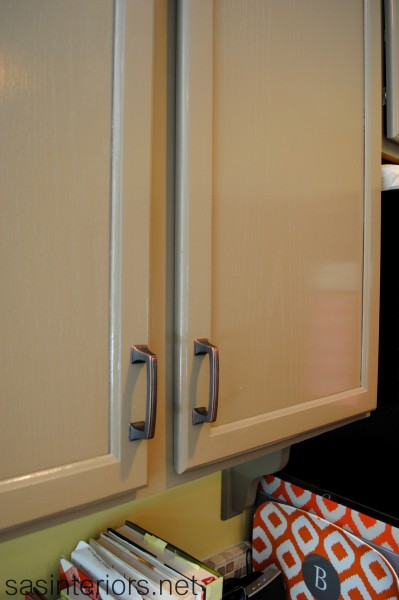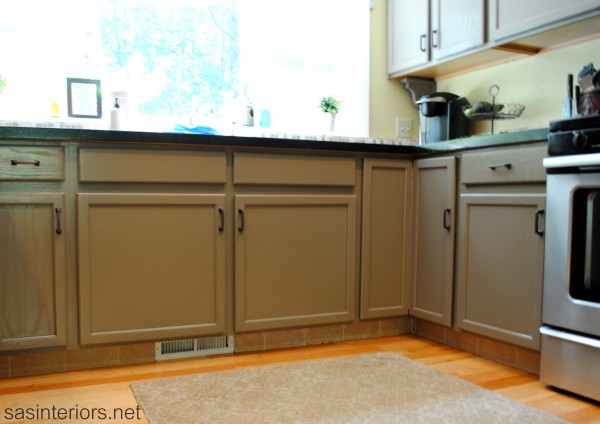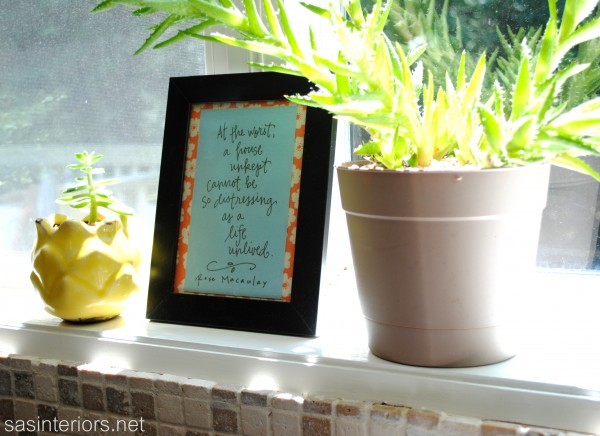How-To Paint Laminate Furniture
I recently shared my newly styled bookshelves, but before I added all the colorful books and stylish accessories, I gave the bookcases a much needed makeover.
Since painting the space deep blue, the once faux-wood bookcases got lost in the dark hue of the walls, and they were ready for a transformation. A crisp, fresh coat of white was the perfect solution to make a statement.
I purchased these two bookcases from Walmart about 2 years ago. Each were around $100 and were not the best of quality (duh, look at the pricetag). Anyway, they fit the bill at the moment, but recently the shelves started to bow. Aside from the decision to paint the bookcases, I also needed to make a few updates so they would last a few more years – I’ll get to more on that later in the post.
Before starting the process of painting the laminate, I did a little research on the process and the first article I saw was Lindsay’s post when she transformed her TV cabinet. It was just what I needed to get me started.
Here’s the bookcase before…
To begin, I gave each bookcase a good sanding with my orbital sander (hands down, my favorite power tool). These bookcases are made of a particle board-like composite with a faux-wood laminate exterior. It was important NOT to sand too much because otherwise the surface would get ruined (since it’s essentially paper), but at the same time it was important to get them ‘roughed-up’ so the paint would absorb into the surface.
Then the next key step was to prime all the surfaces. Like usual, I used Kilz Primer which blocks, seals, and preps the surface for the paint to adhere to the surface. Primer is important, but especially when painting over laminate (as I described above). Unlike wood, laminate is a smooth, non-porous material, so it really needs something to ‘grab’ on to – primer will do the trick! It’s suggested that primer takes 7 days to completely dry – you can take that advice if you’d like, but I didn’t (shame, shame on me, I know). BUT, I did wait about 4 days before painting to really make sure the surface was good-to-go!
My good blogging friend, Diane, recently wrote a post on Gripper Paint. She uses the Glidden brand (Kilz brand has a similar product), and even though I haven’t tried it, this is another great product to use as a primer. The name says it all.
Sidetrack Steps…
At this point of the project, I made the decision to make a few much-needed updates to the structure and look of the bookcase. Instead of moving on to directly painting the bookcase, I decided to replace the shelves and the backing material.
As I mentioned before, the shelves were really bowing – alot – so I took a trip to my hardware store and had a long piece of 2×12 cut into lengths needed for new shelves.
And check out the back of the bookcase… UGLY! It was basically paper and when I started to paint the surface, it started warping even more. Once the decision was made to upgrade the back, I crumbled the paper-backing with one hand…
To fix the backing, I had a thin piece of plywood cut to size. Then the Mister and I flipped the bookcase onto it’s front and nailed the plywood to the perimeter of the bookcase back. (This step might seem difficult, but please be assured it wasn’t – this was probably one of the easiest steps throughout this project).
Now back on track…
After sanding, priming,and making a few updates, it was time to PAINT!
I used a brush for the corners and a roller for the flat surfaces. In certain areas, I used a brush first, then went over the same surface with the roller to achieve a smooth, stroke-less surface. Here’s the bookcase with the first coat of paint…
Here’s a tip. If the surface isn’t sanded or not sanded enough, then the paint will bubble (because it’s not adhering to the surface). Check this out…
This is a No-No!
I’ll be honest, these bookcases took about 3-4 coats until I felt they were fully covered. And even after they were dry to the surface, I didn’t put anything on the shelves for at least a week. Paint takes about 30 days to fully cure and with the heavy books and accessories sitting on them, the last thing I would want would be to have them ruined or peel!
And this is the result…
So refreshing! Then it was time to add the books and accessories.
And here’s a peak at how the bookcases look fully styled with books and accessories. You can check out more by viewing this post.
Painting laminate wasn’t difficult, but I did find it more time consuming than painting wood. To sum it up, the most important steps are to sand and prime all the surfaces before painting. If you were to skip the 2 steps, your paint would have nothing to adhere to and would most likely peel right off. Going into this project, I wasn’t sure of the result and if the paint would even stay since the surface was so smooth, but with the right preparation, I was thrilled with the outcome.
